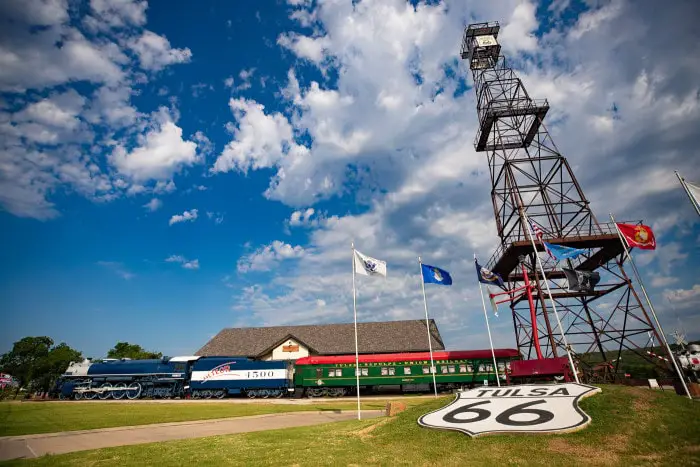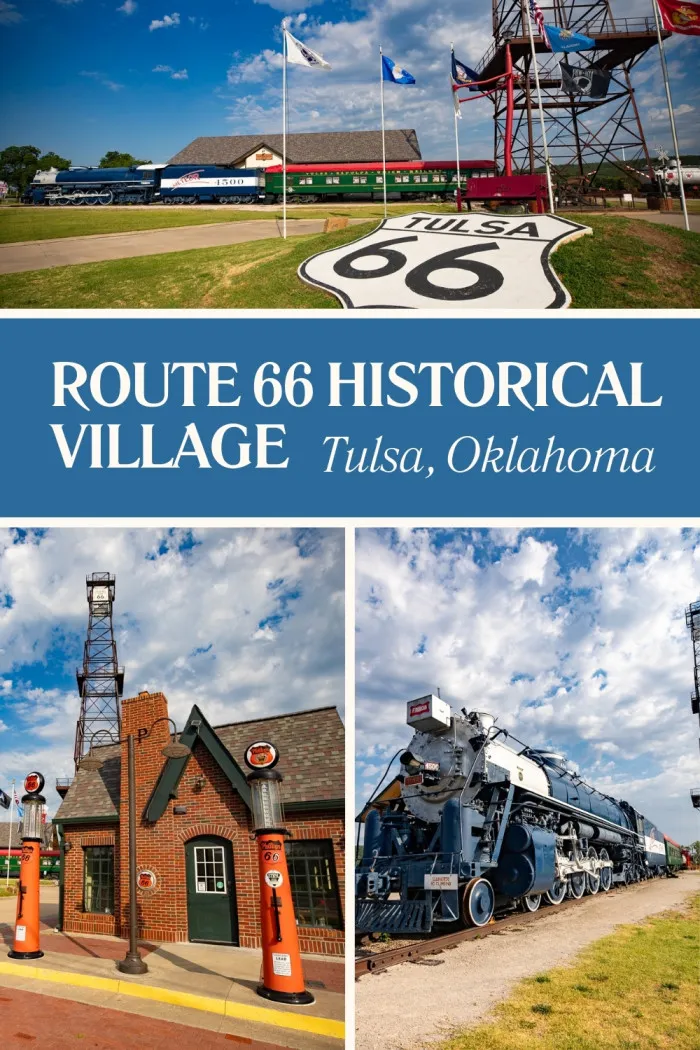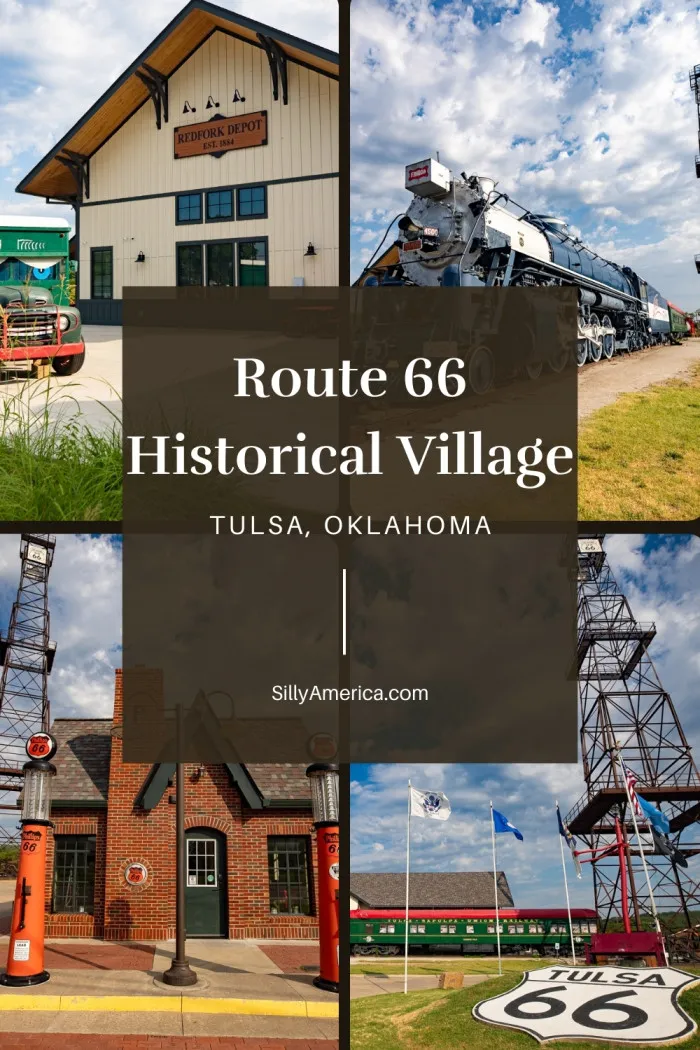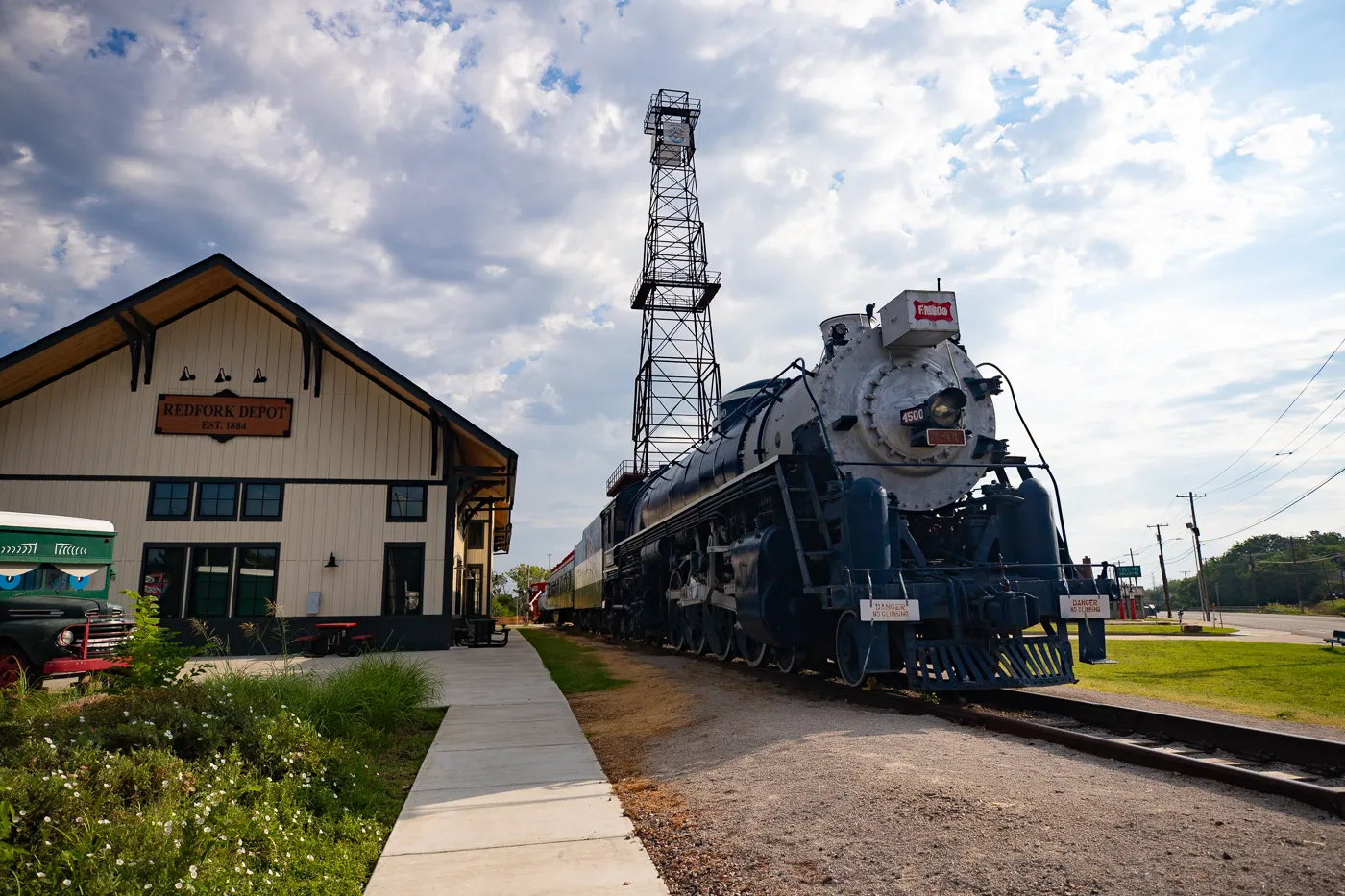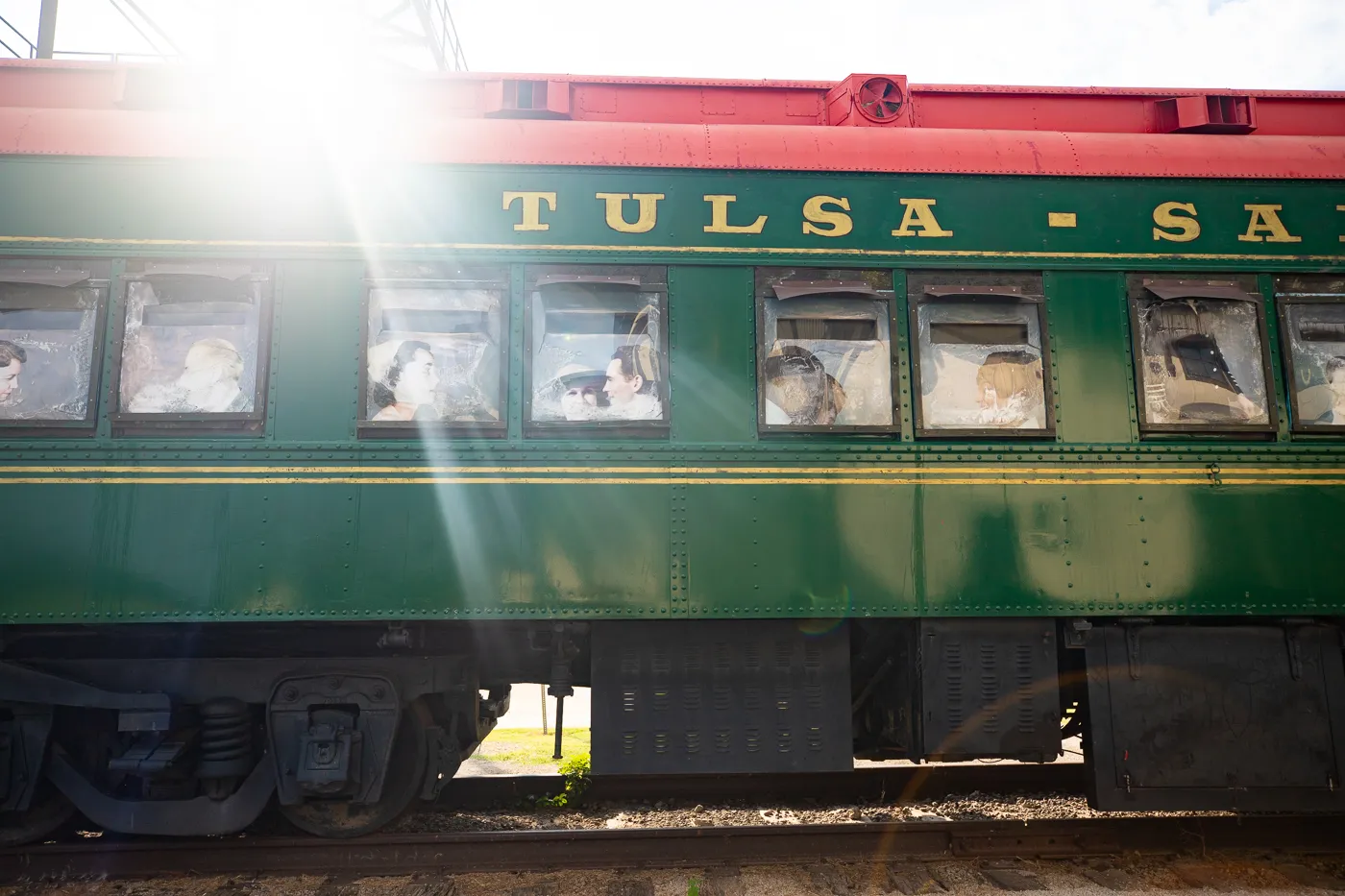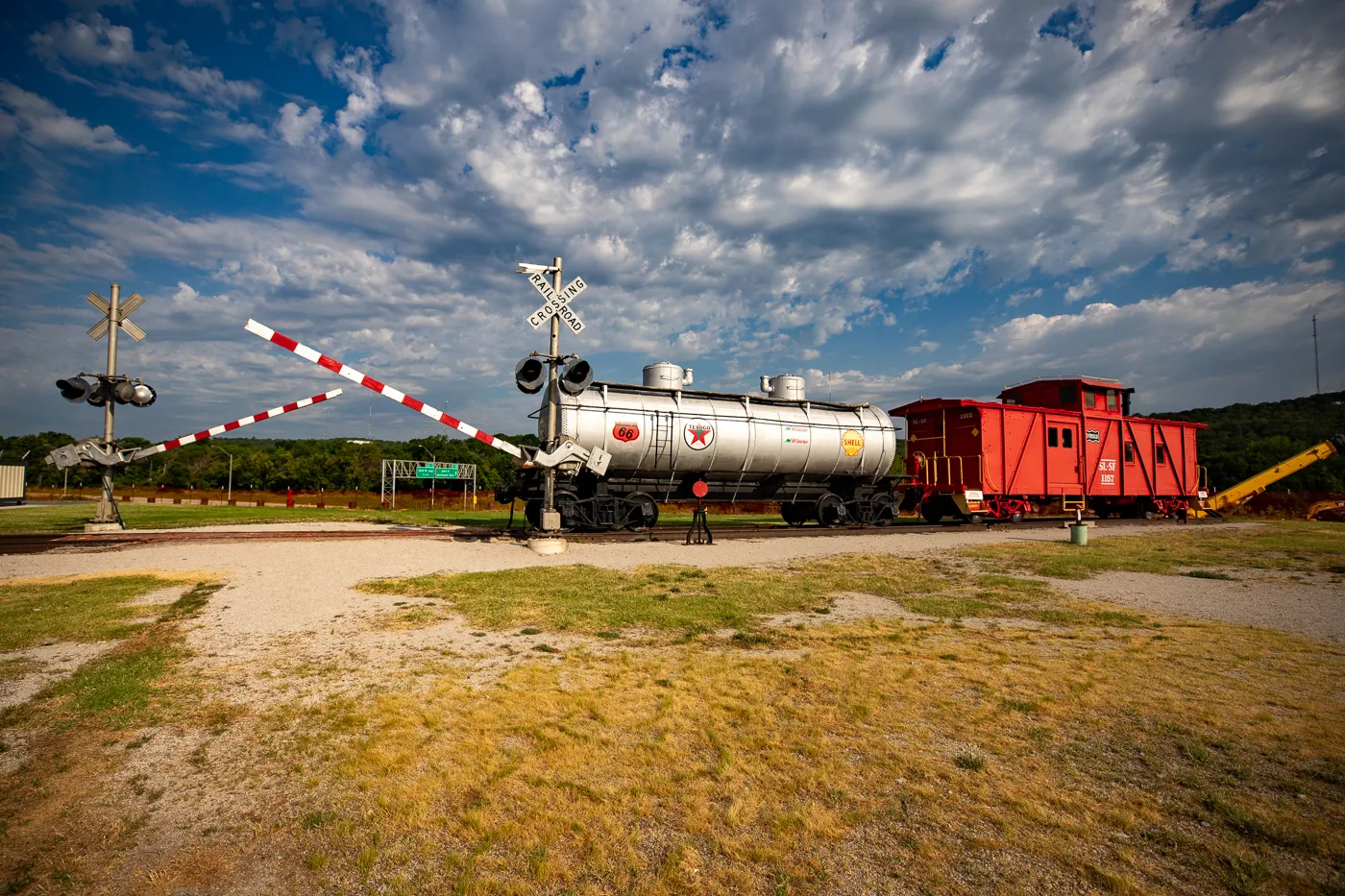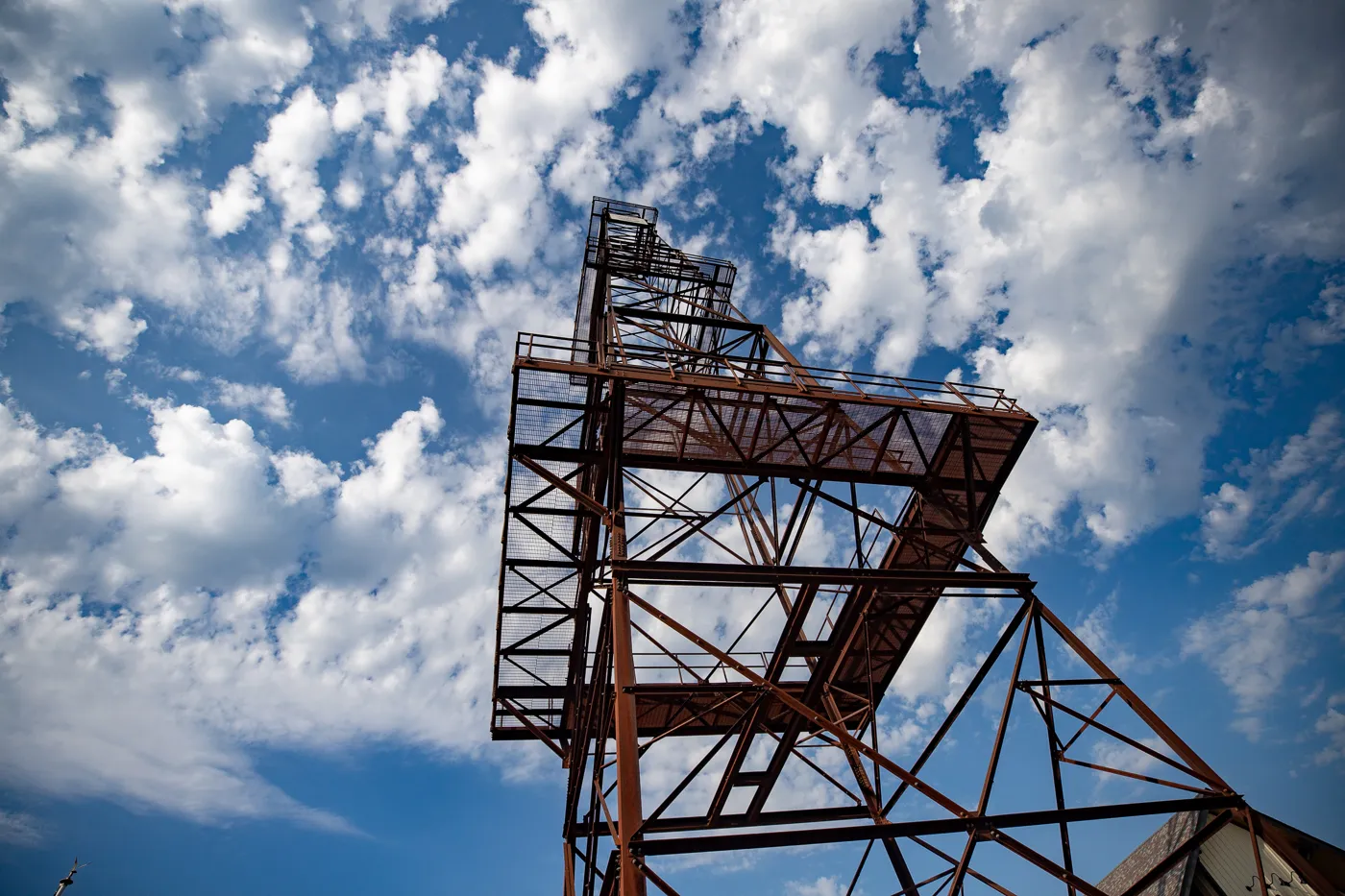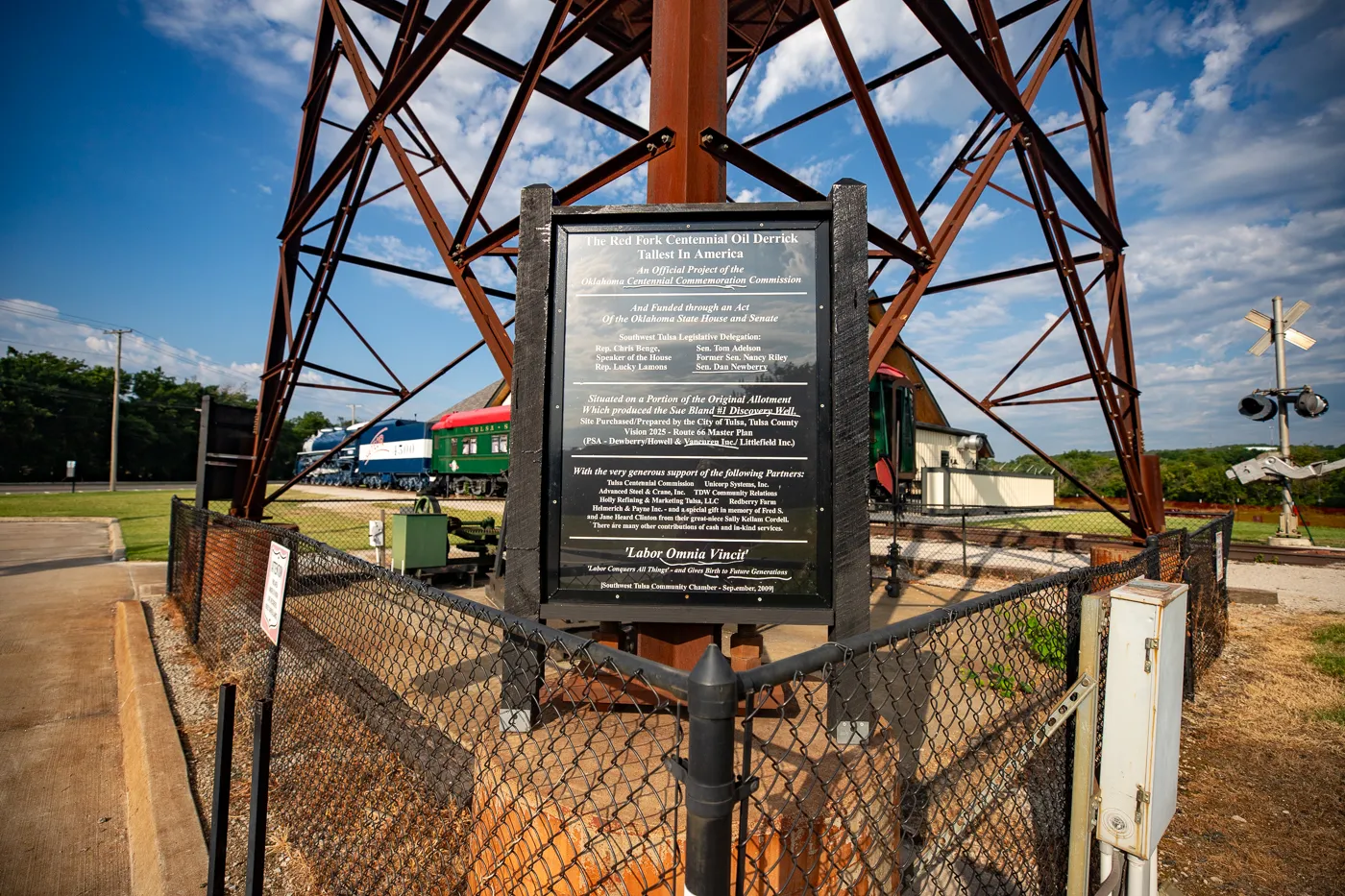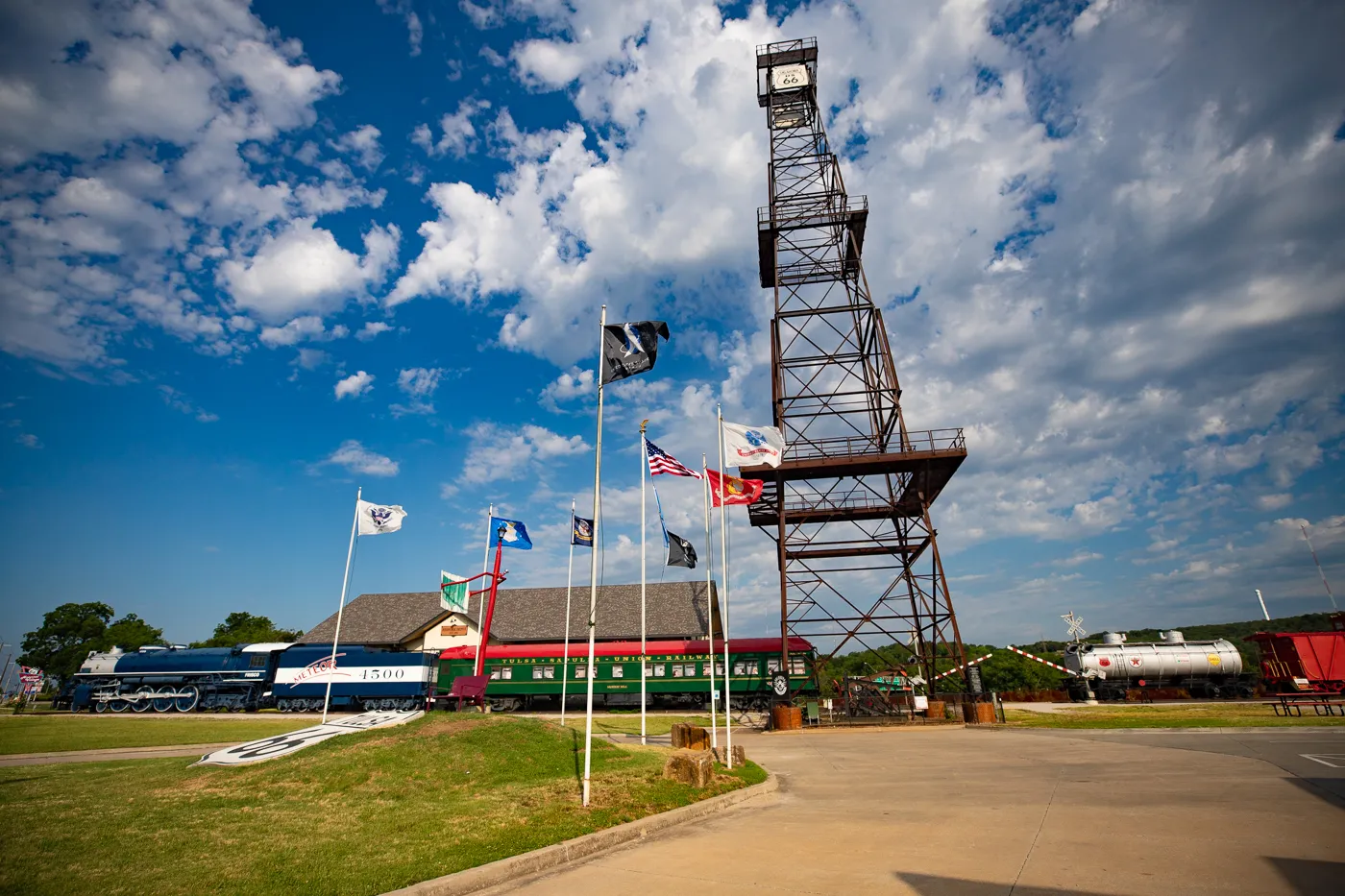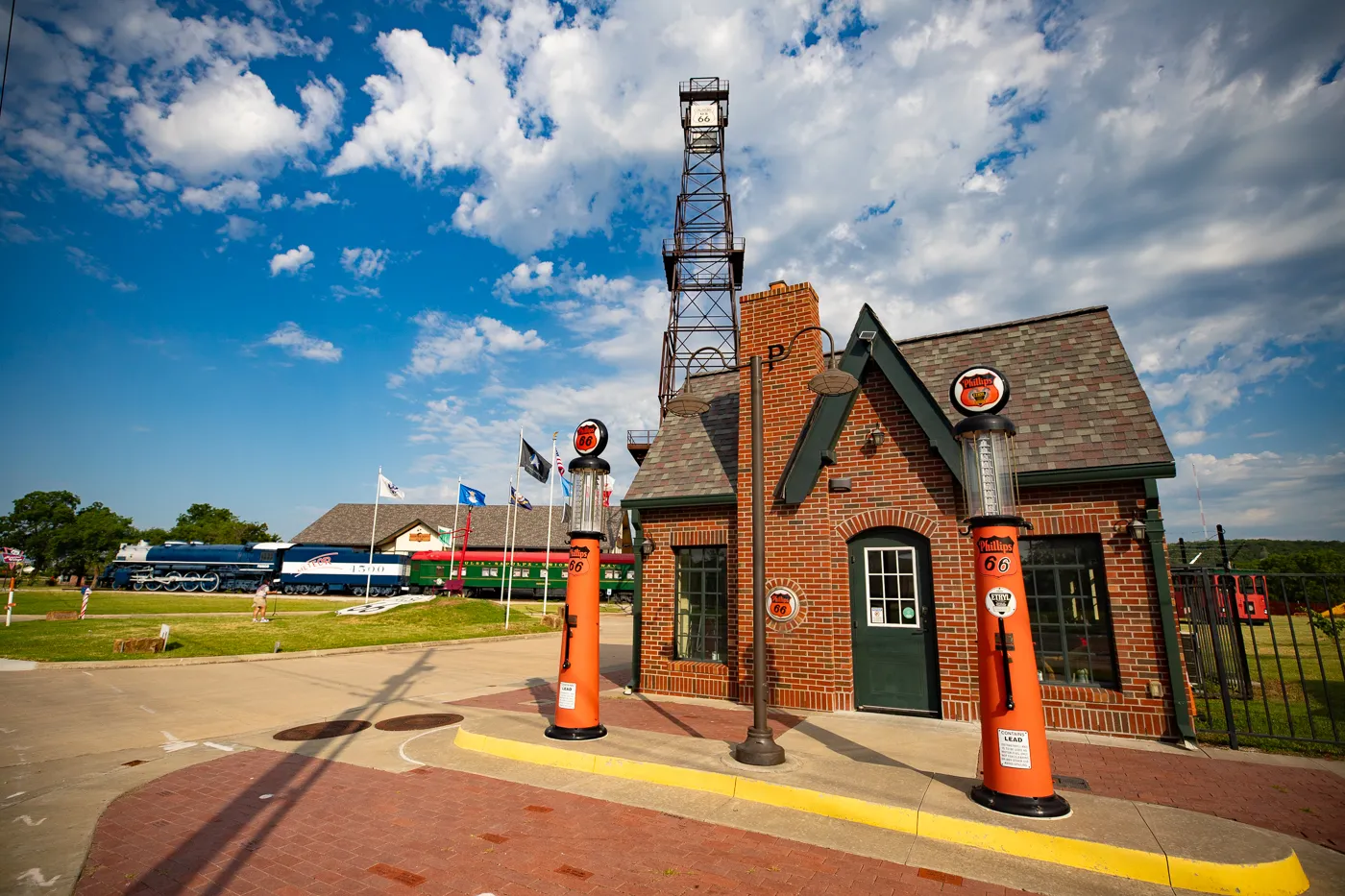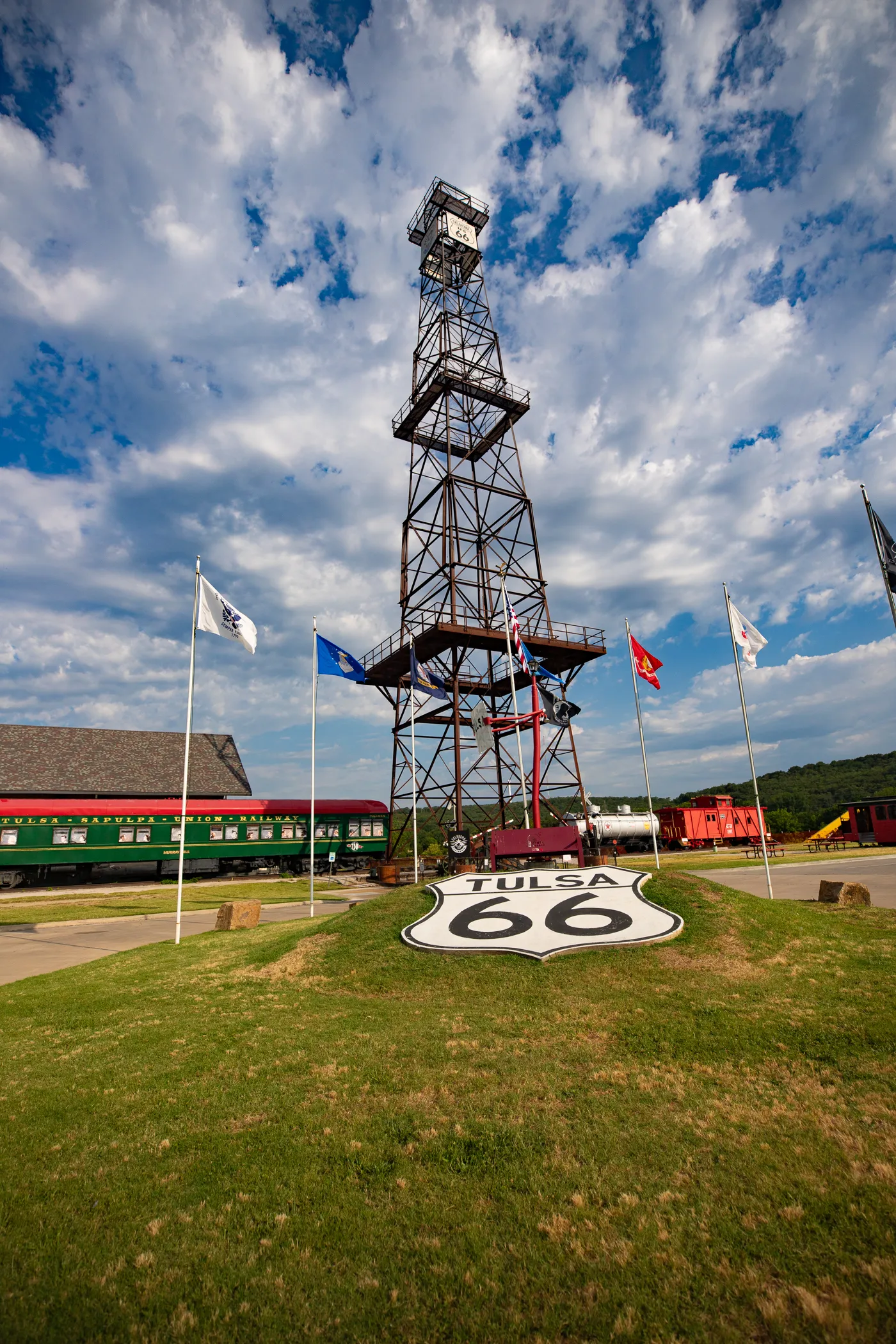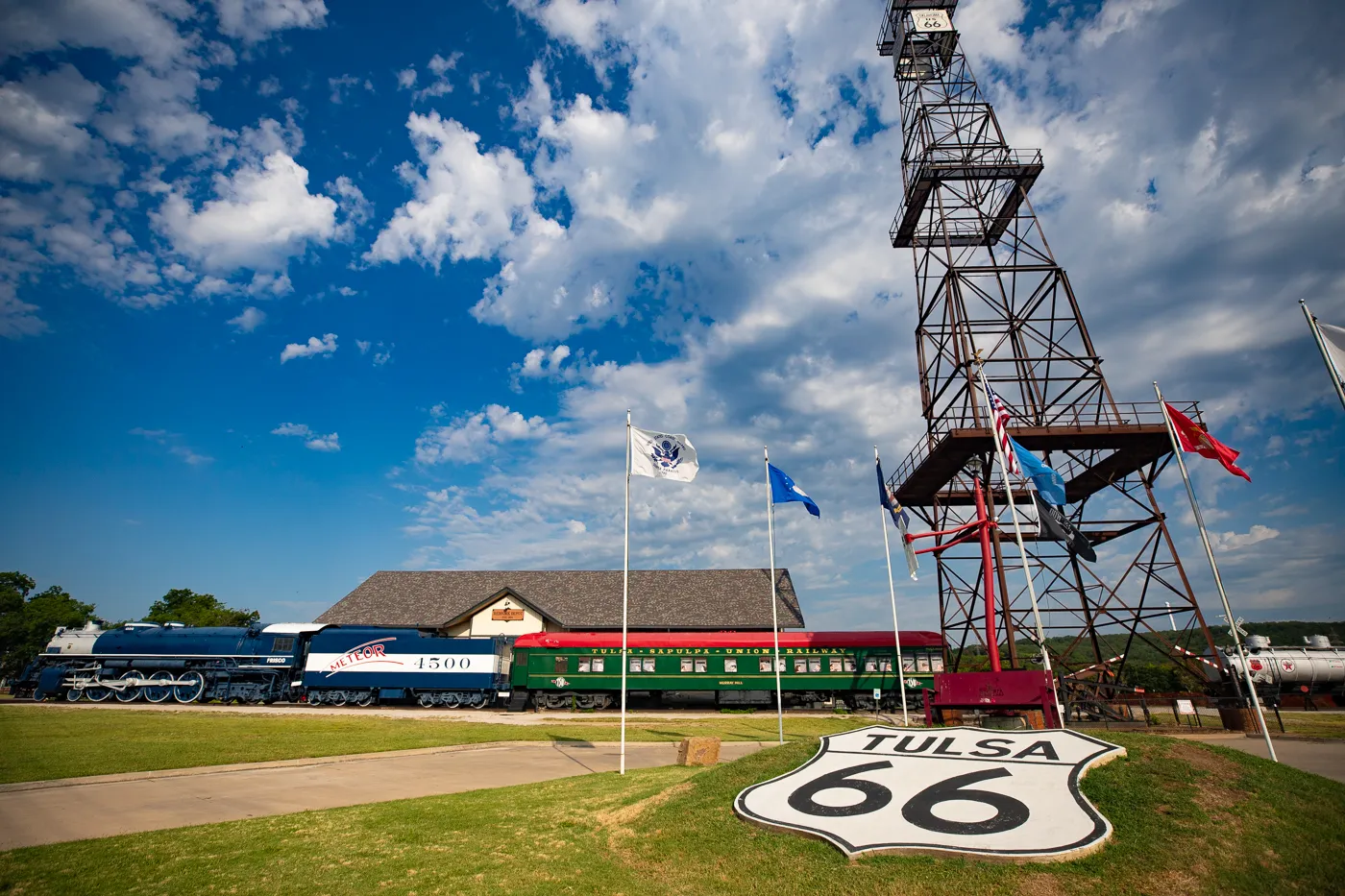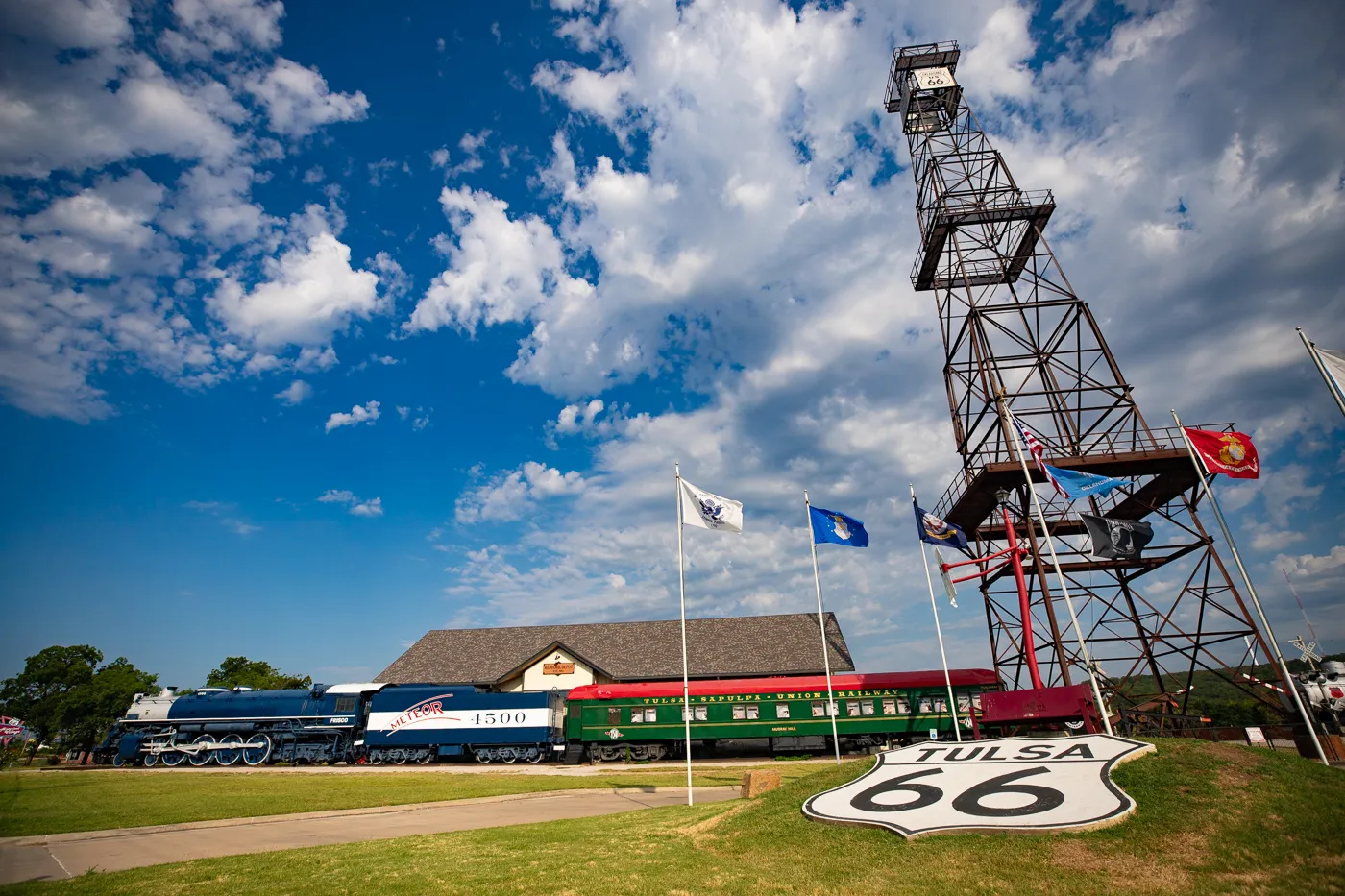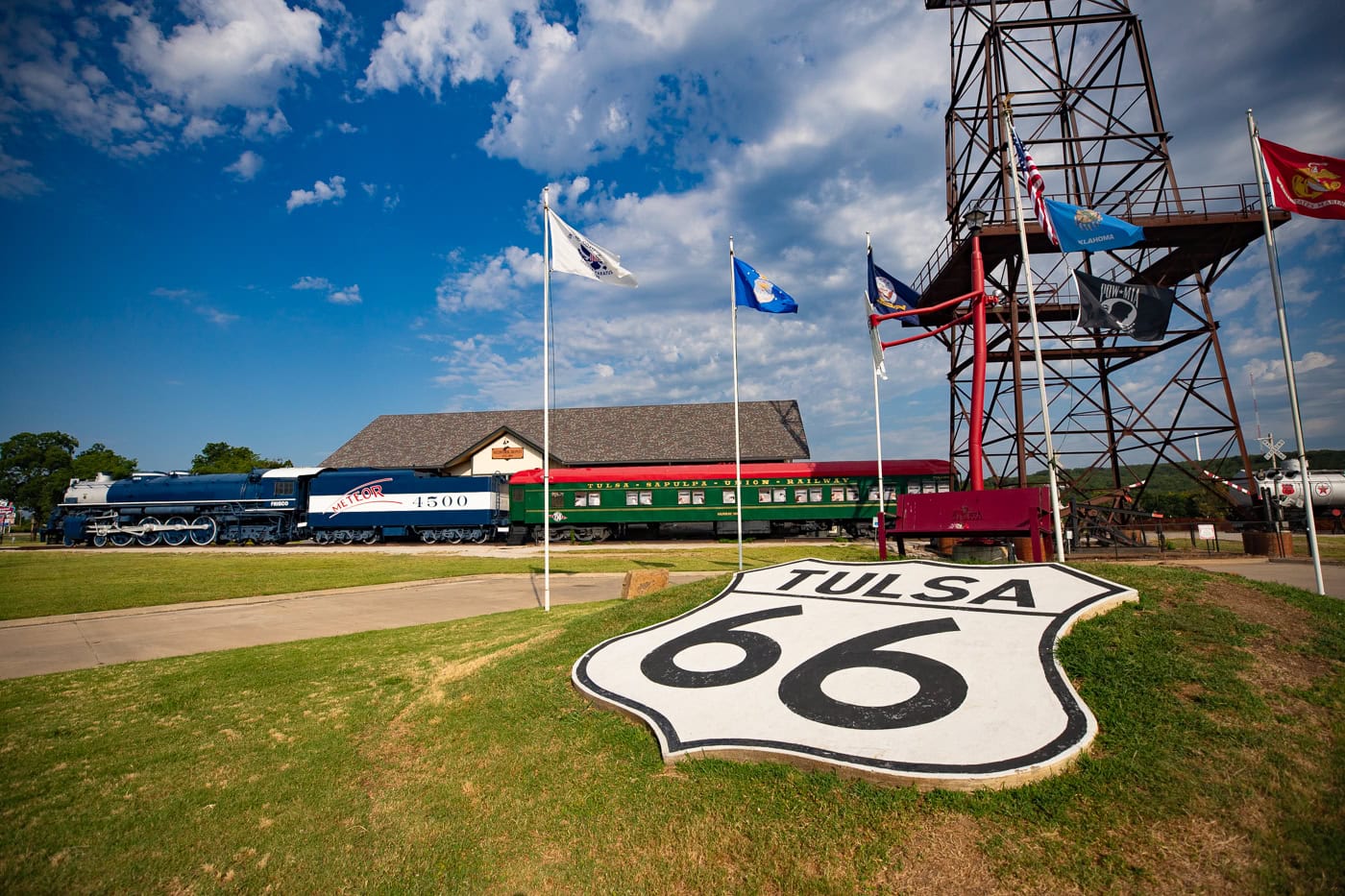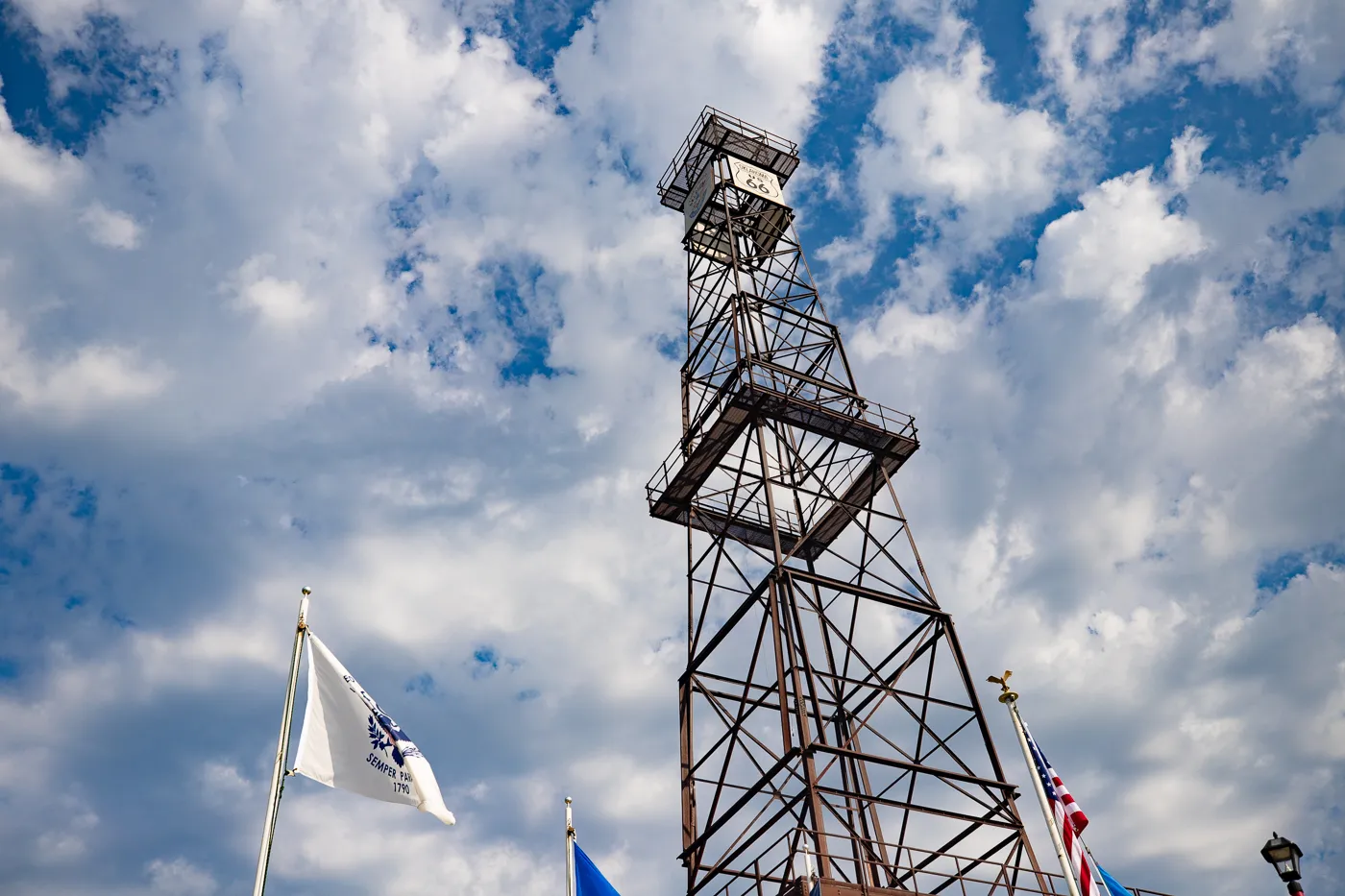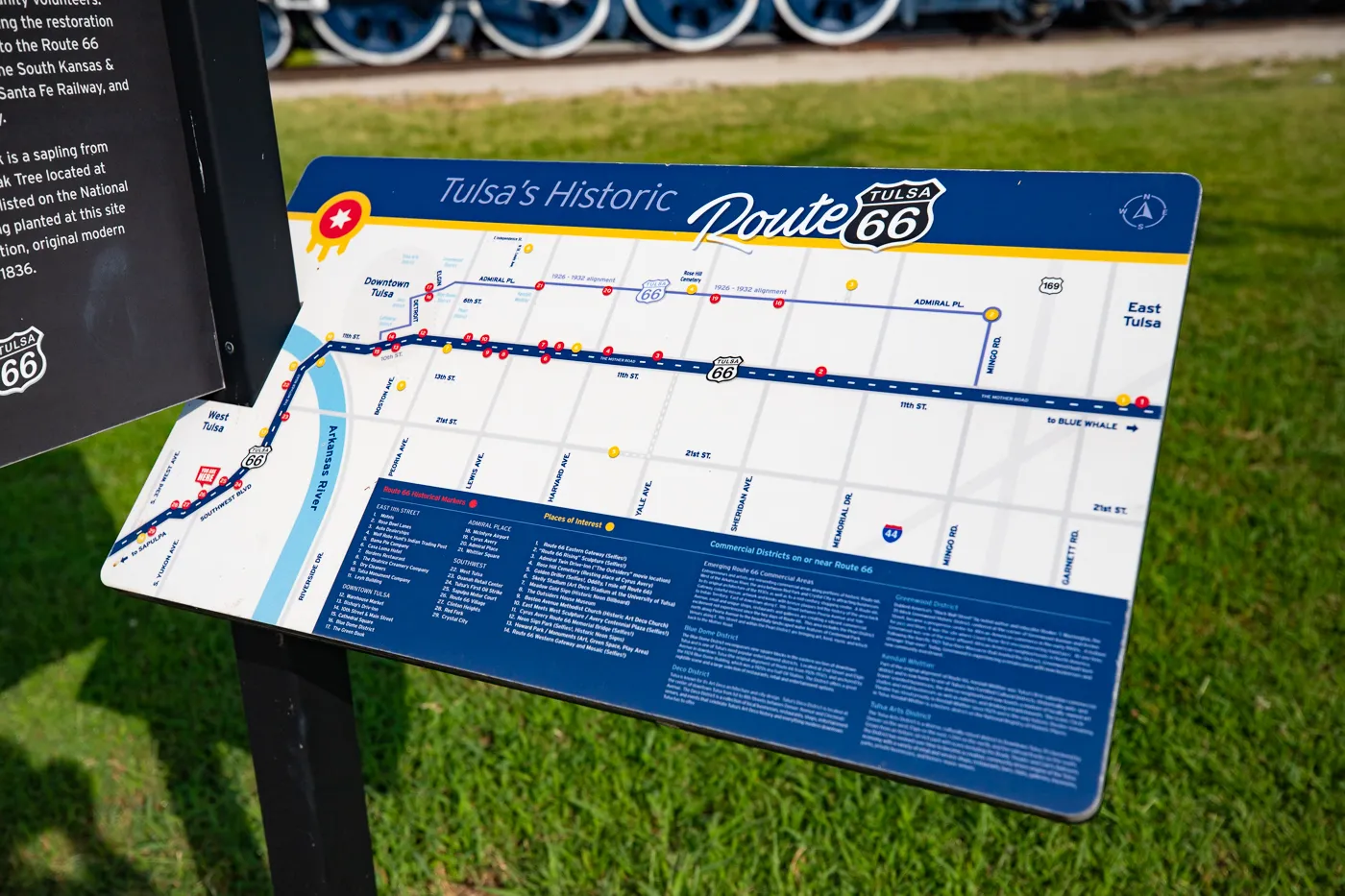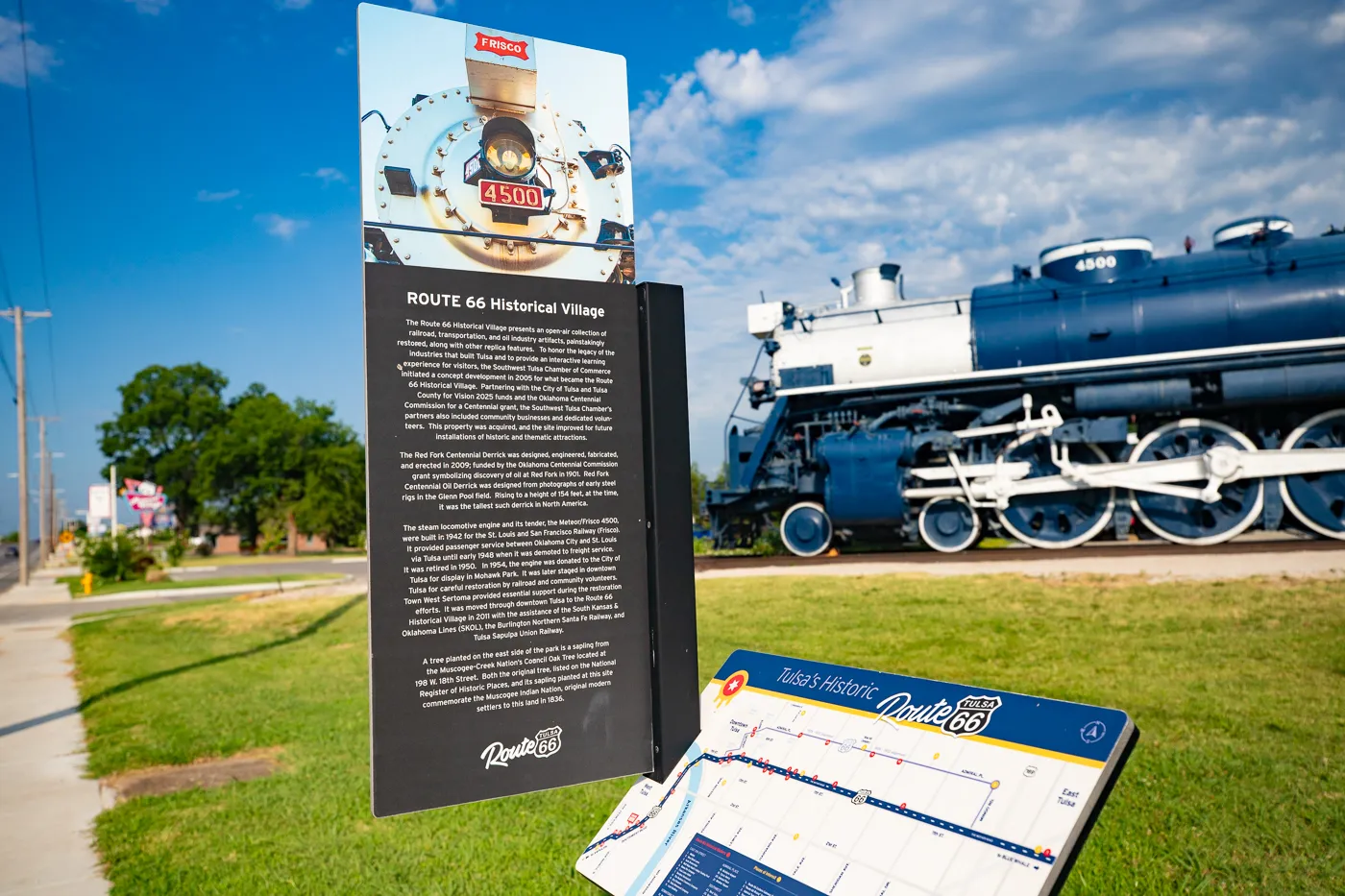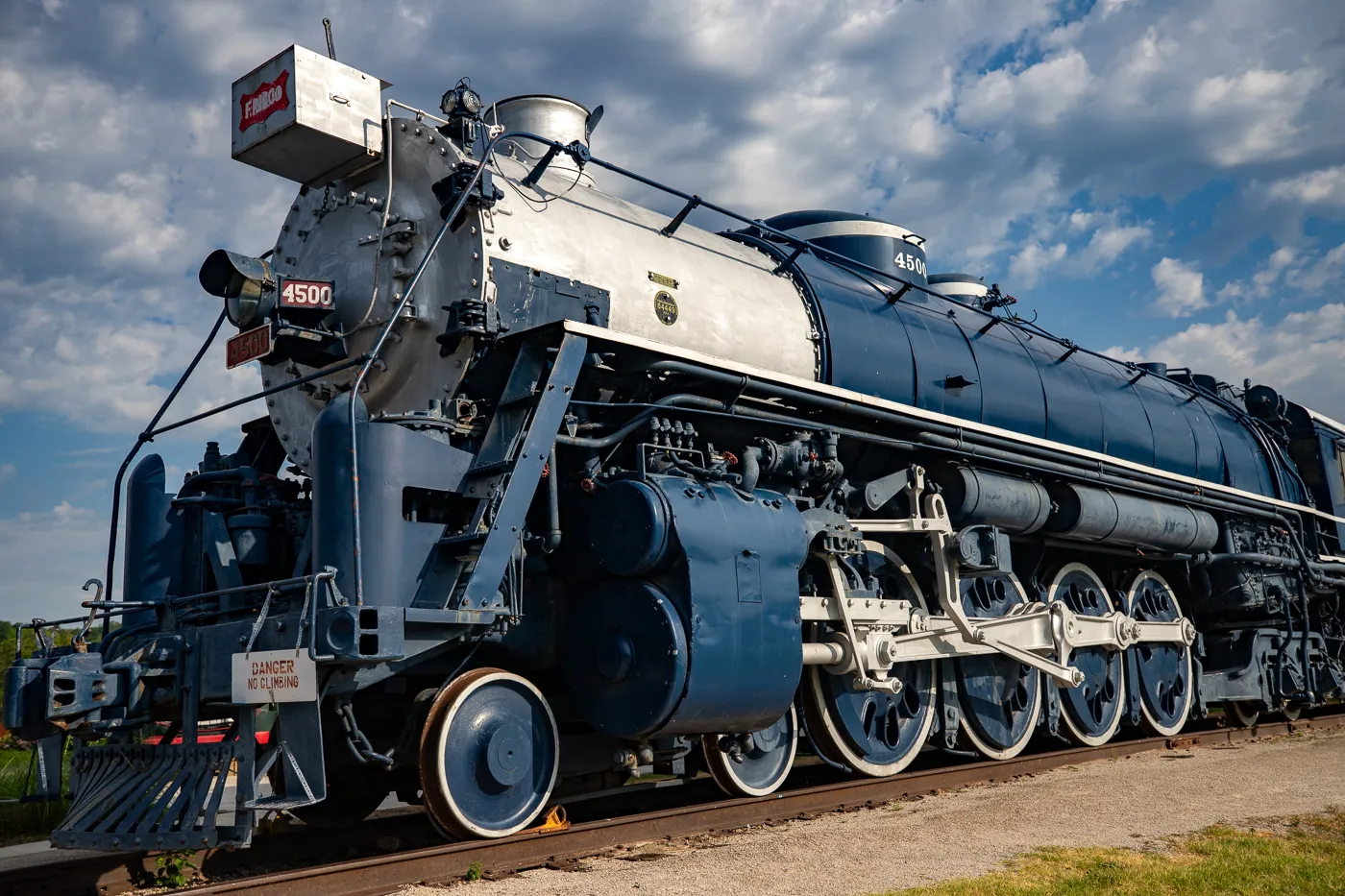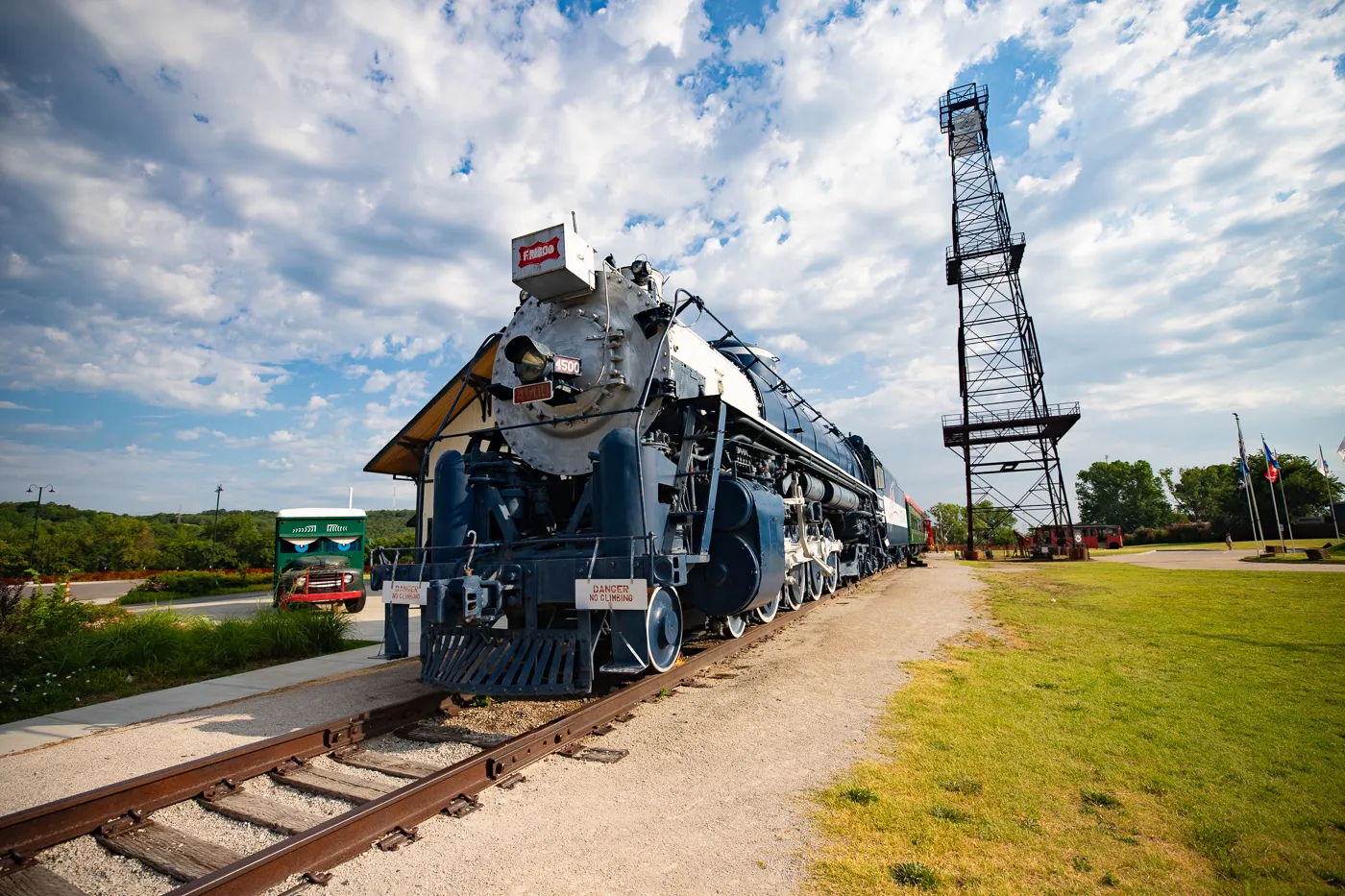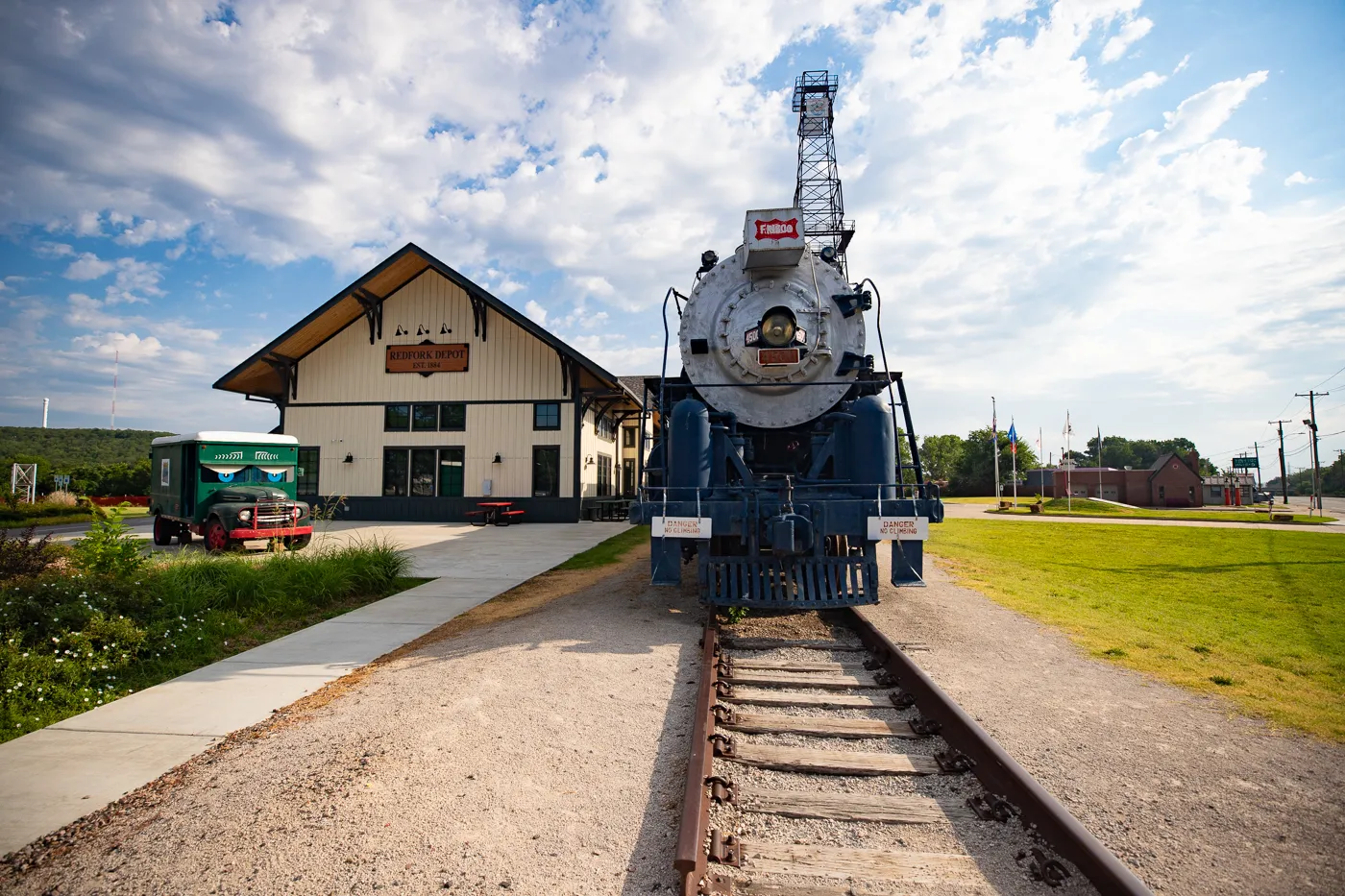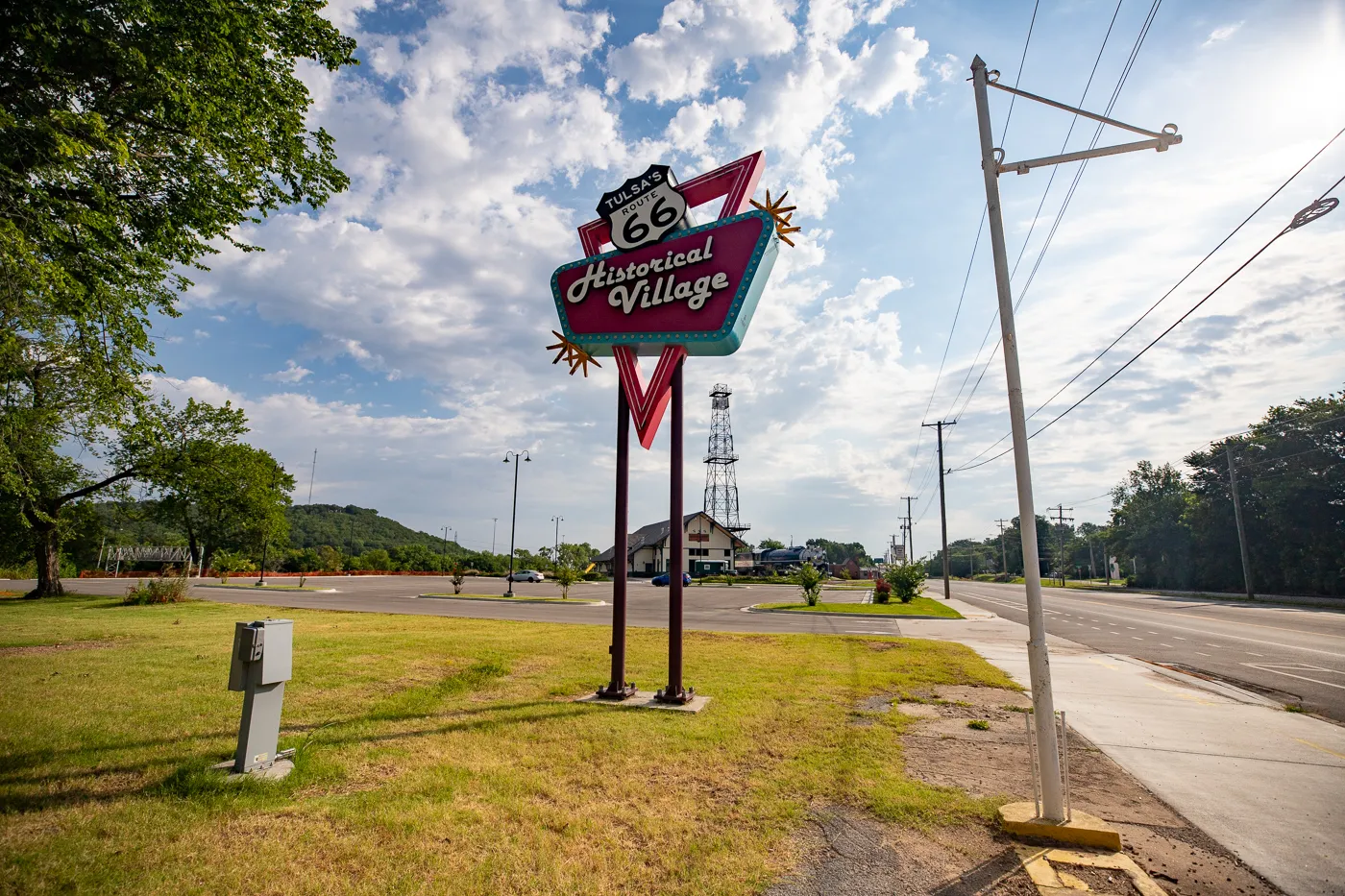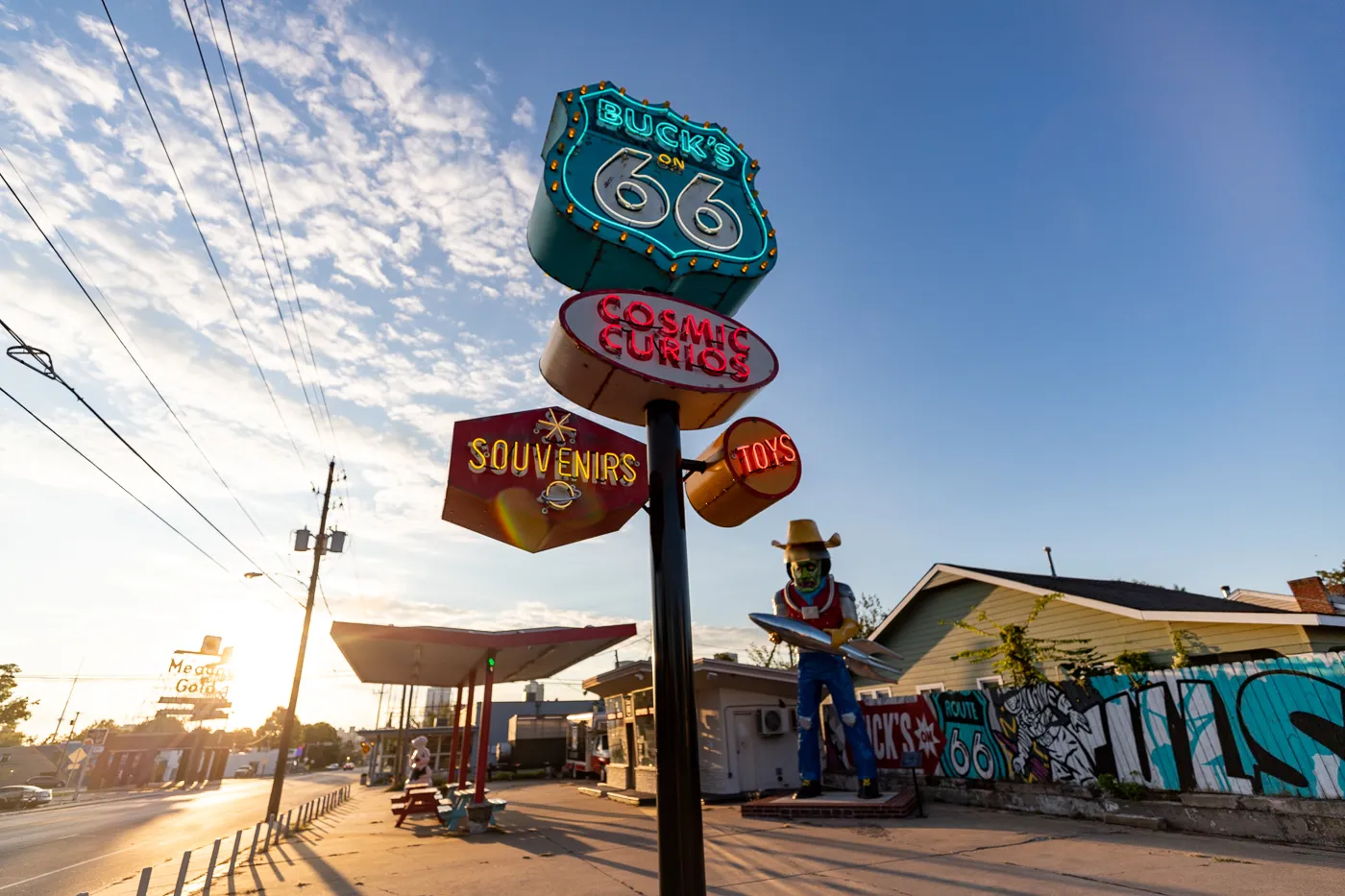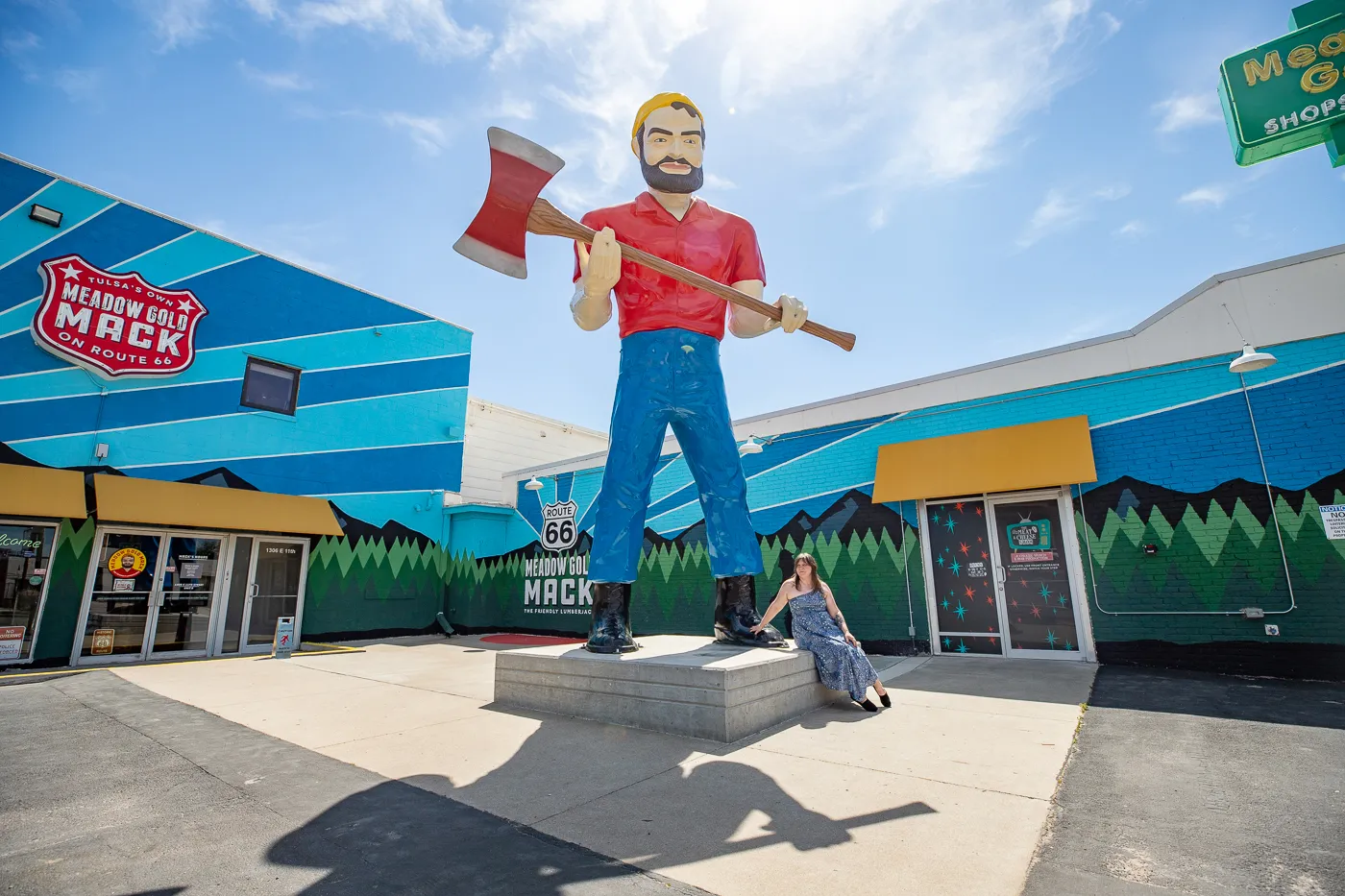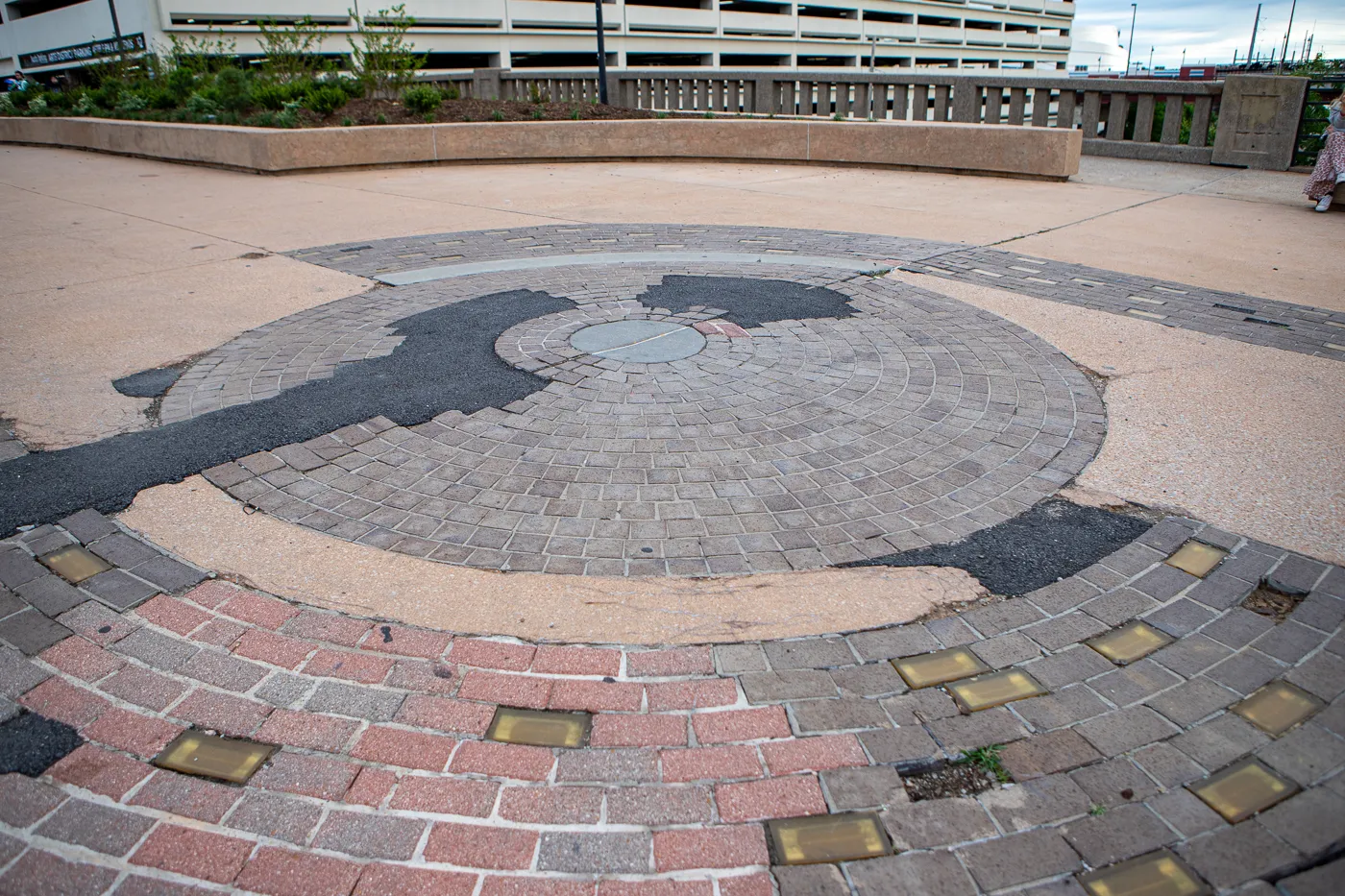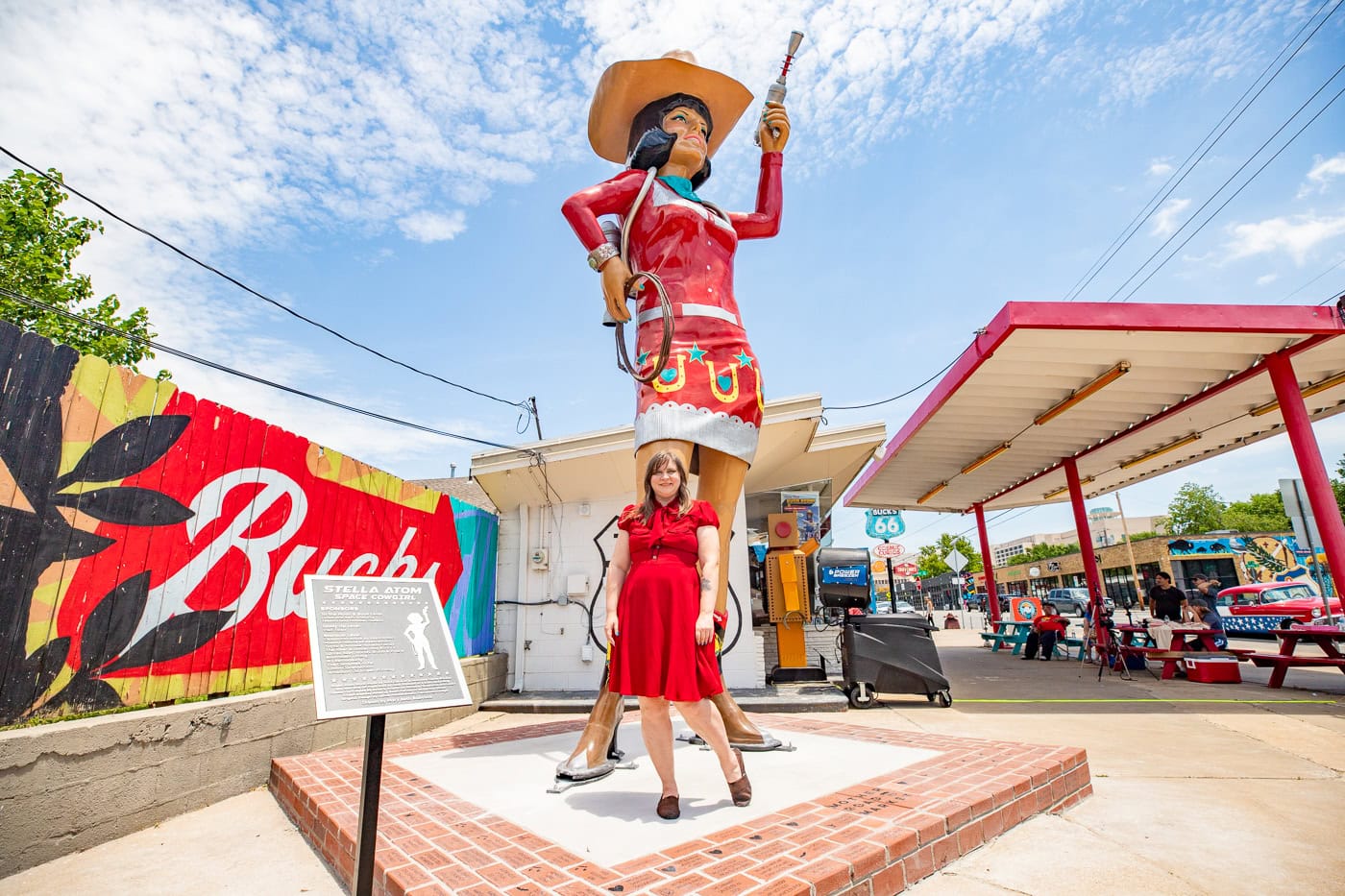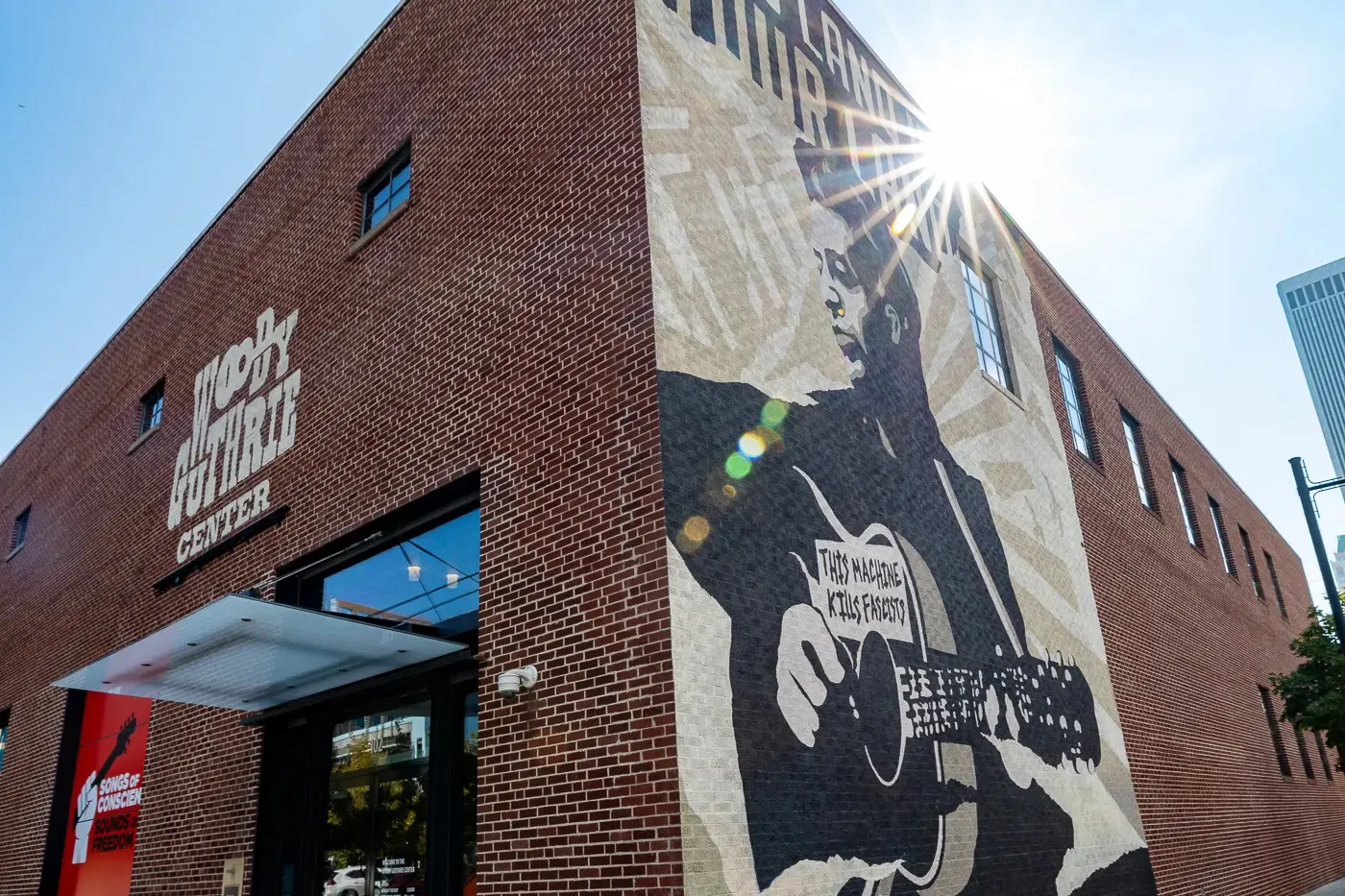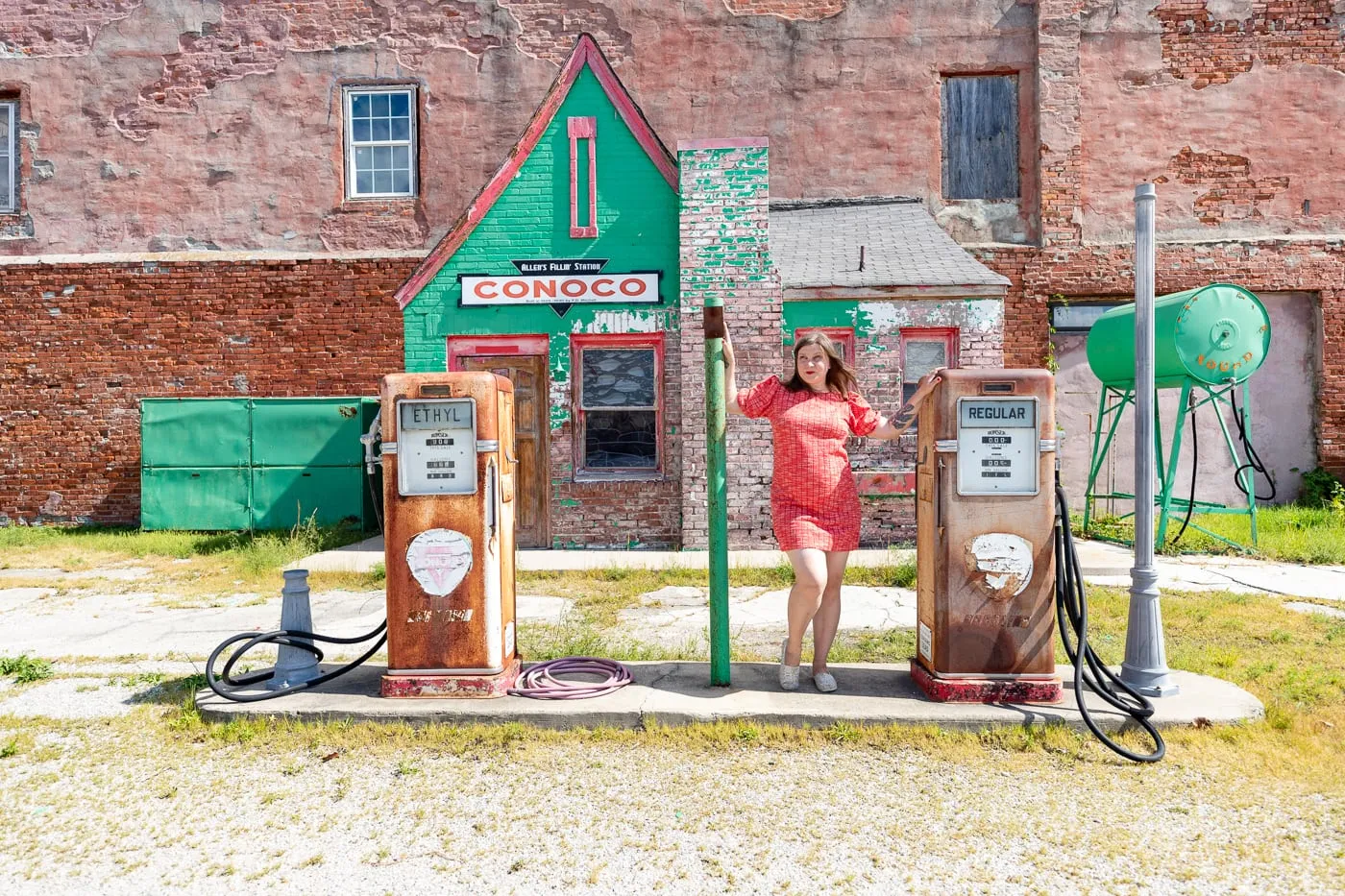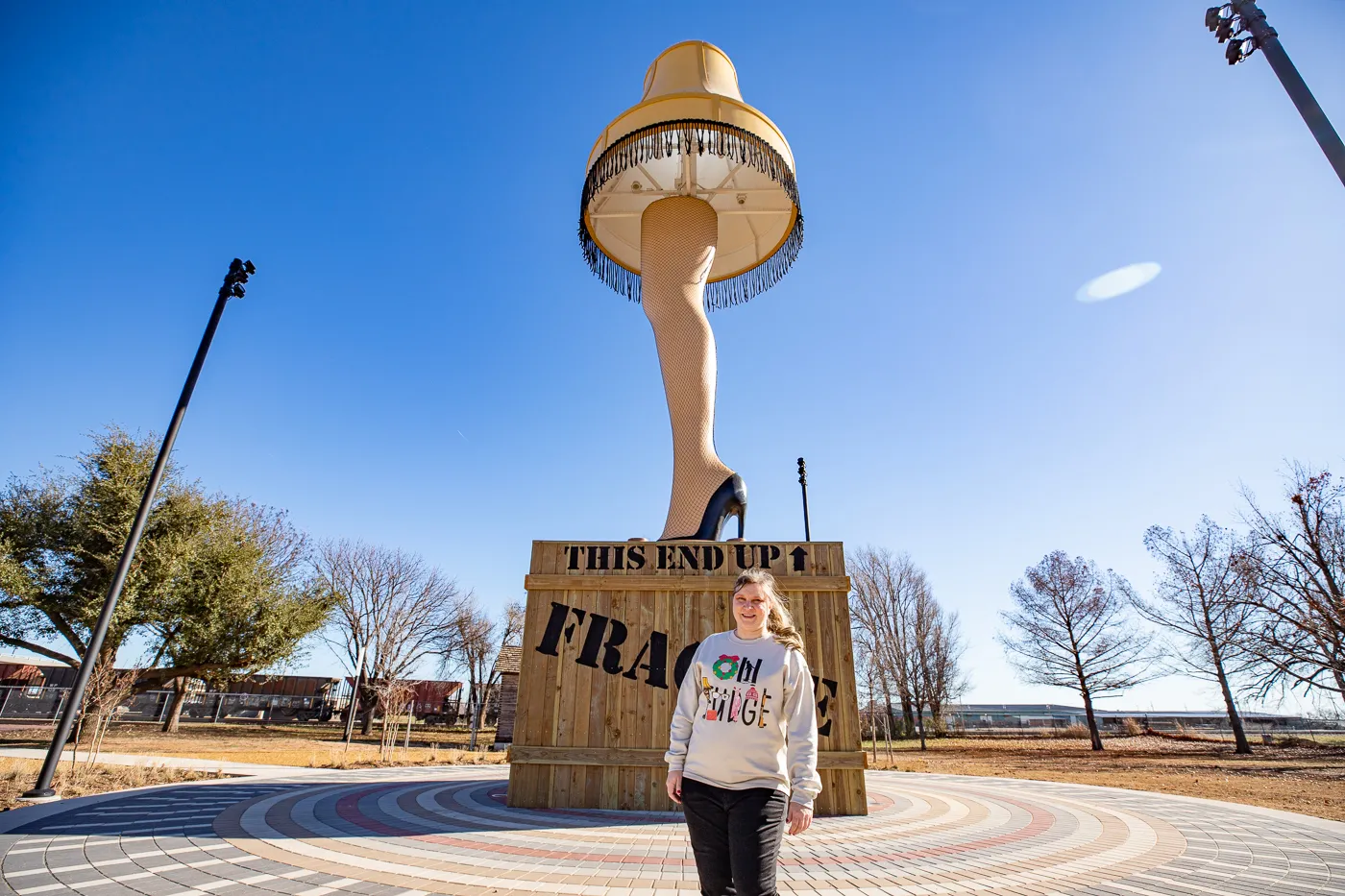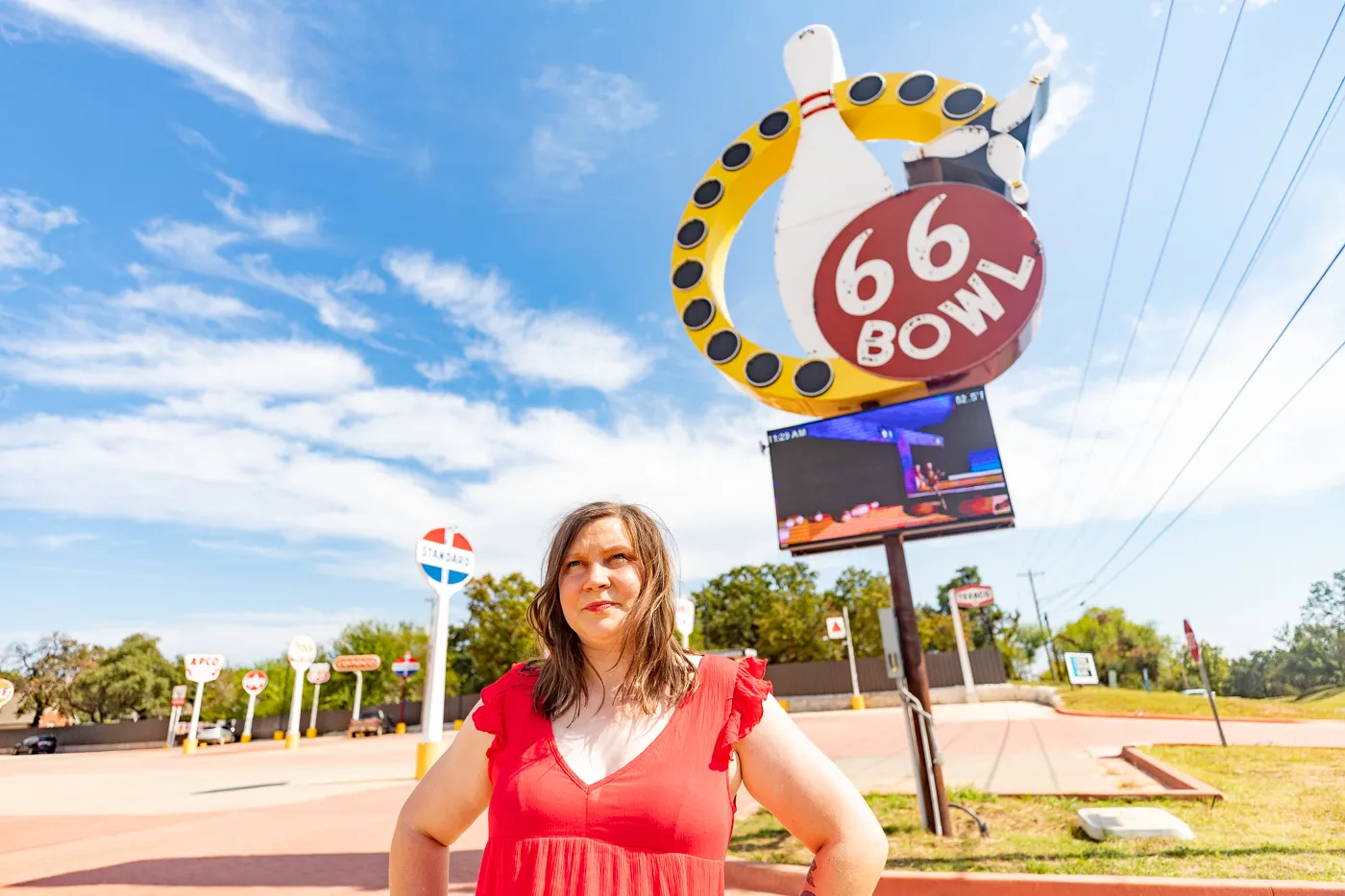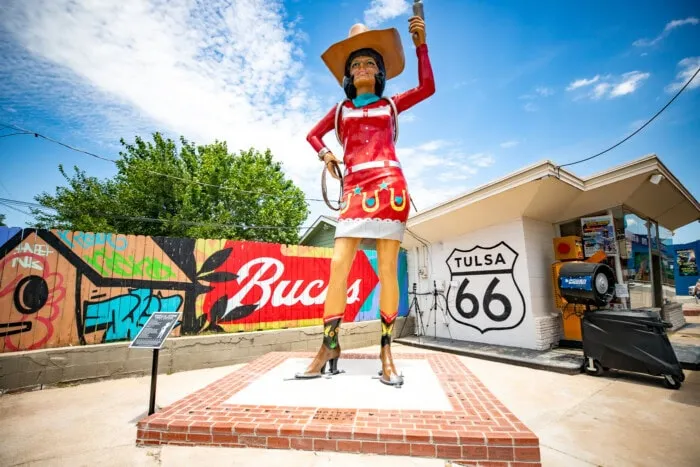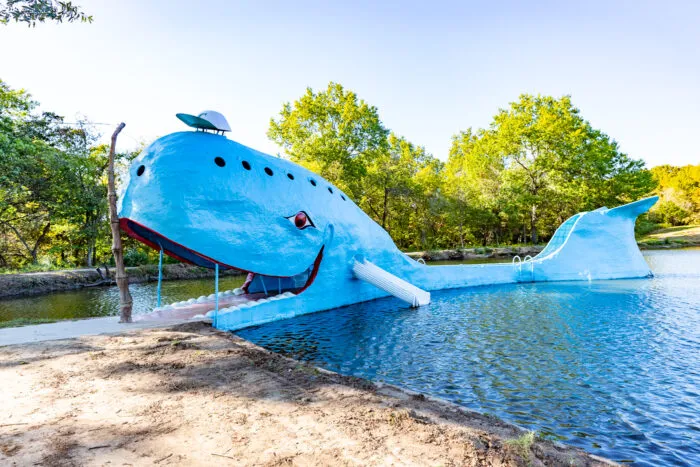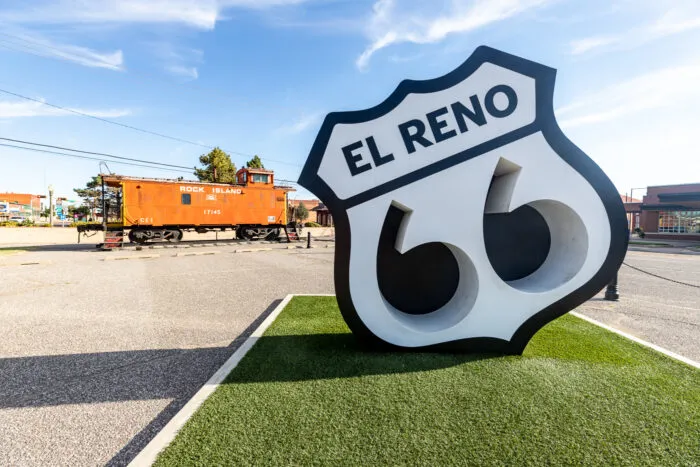Route 66 Historical Village in Tulsa, Oklahoma is an open-air museum that transports you back in time to Tulsa’s oil capital origins. Walk through a recreated area that celebrates Tulsa’s roots in as the “Oil Capital of the World.” Walk through this park to learn about and experience Tulsa’s oil, refining and transportation industries.
Here’s what you’ll see at the Route 66 Historical Village in Tulsa, Oklahoma.

The Road Trip Journal & Activity Book
Enjoy fun games and challenges to pass the time on your next road trip and have a keepsake to look back on for years to come with this entertaining must-have for your next vacation.
What to see at the Route 66 Historical Village in Tulsa, Oklahoma
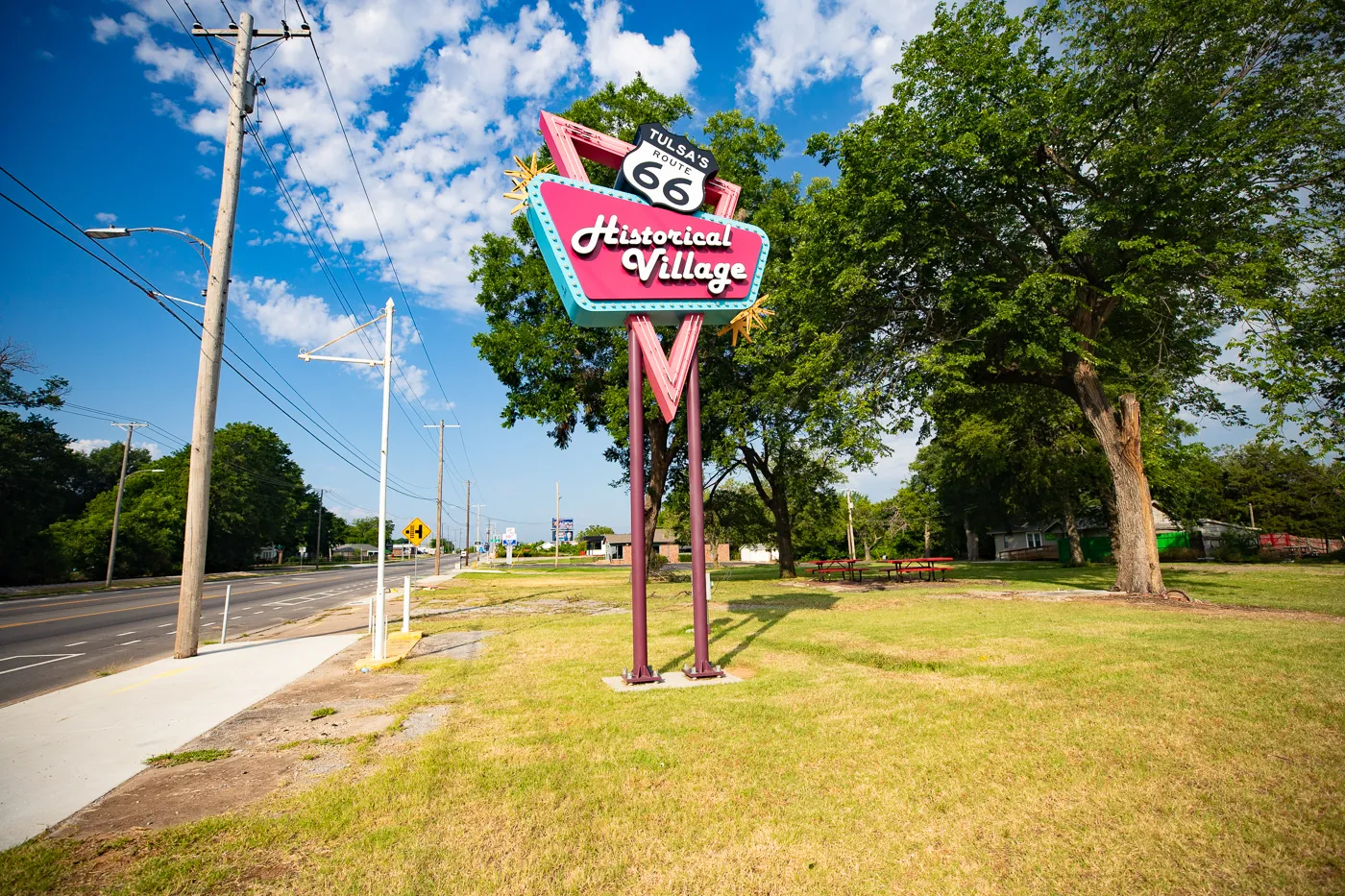
Neon Sign
The first thing you’ll see as you pull into the Route 66 Historical Village is the neon sign that illuminated the entrance. Neon signs are a familiar sight on Route 66 so having one here was a no-brainer. This retro sign was purchased using Vision 2015 Funds
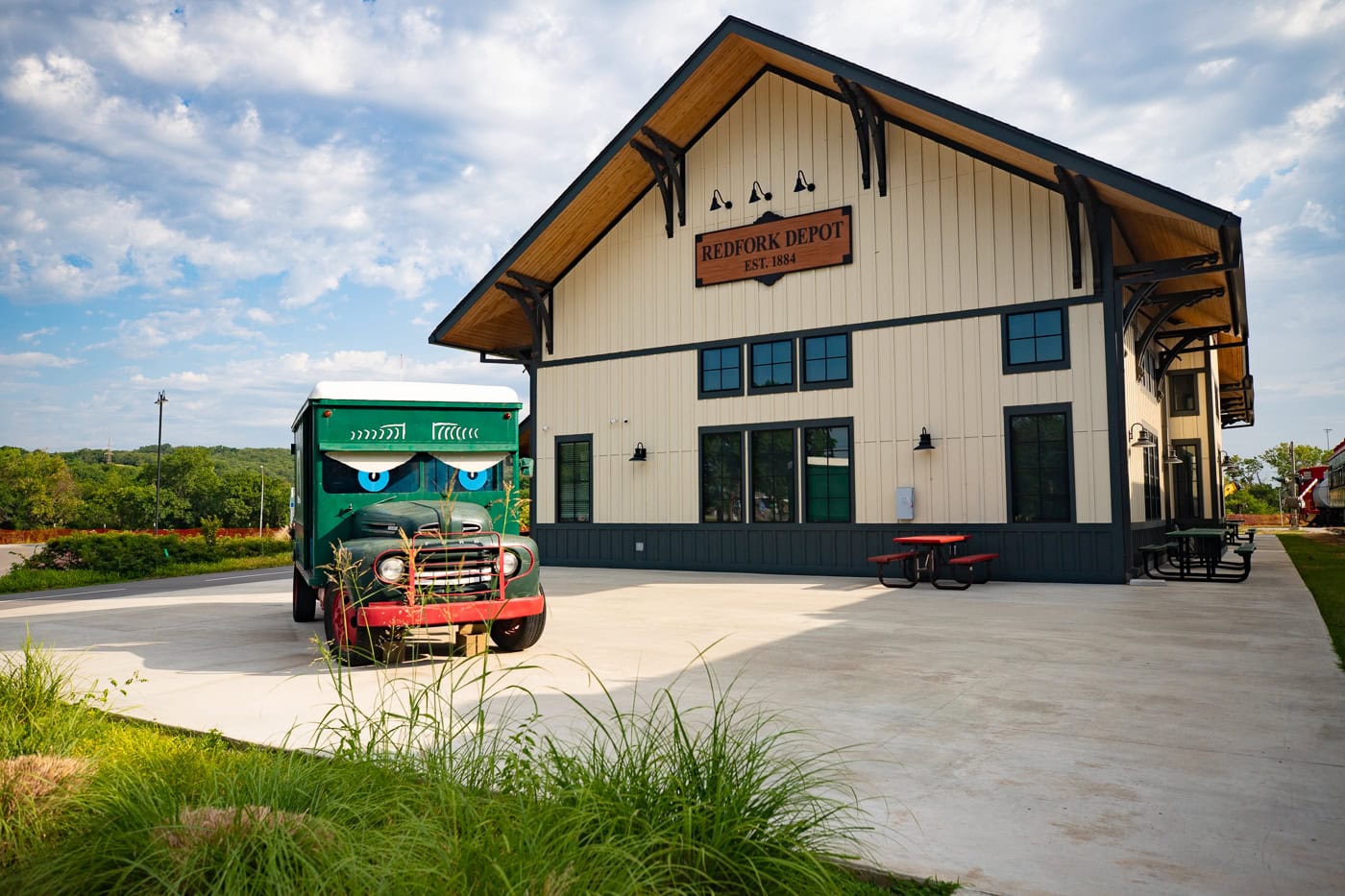
The Depot
On October 22, 2021, the new Red Fork Depot was unveiled at the Route 66 Historical Village. The original 1883 depot operated in Indian Territory within a mile of the new one. The new depot serves as a museum and rentable events center.
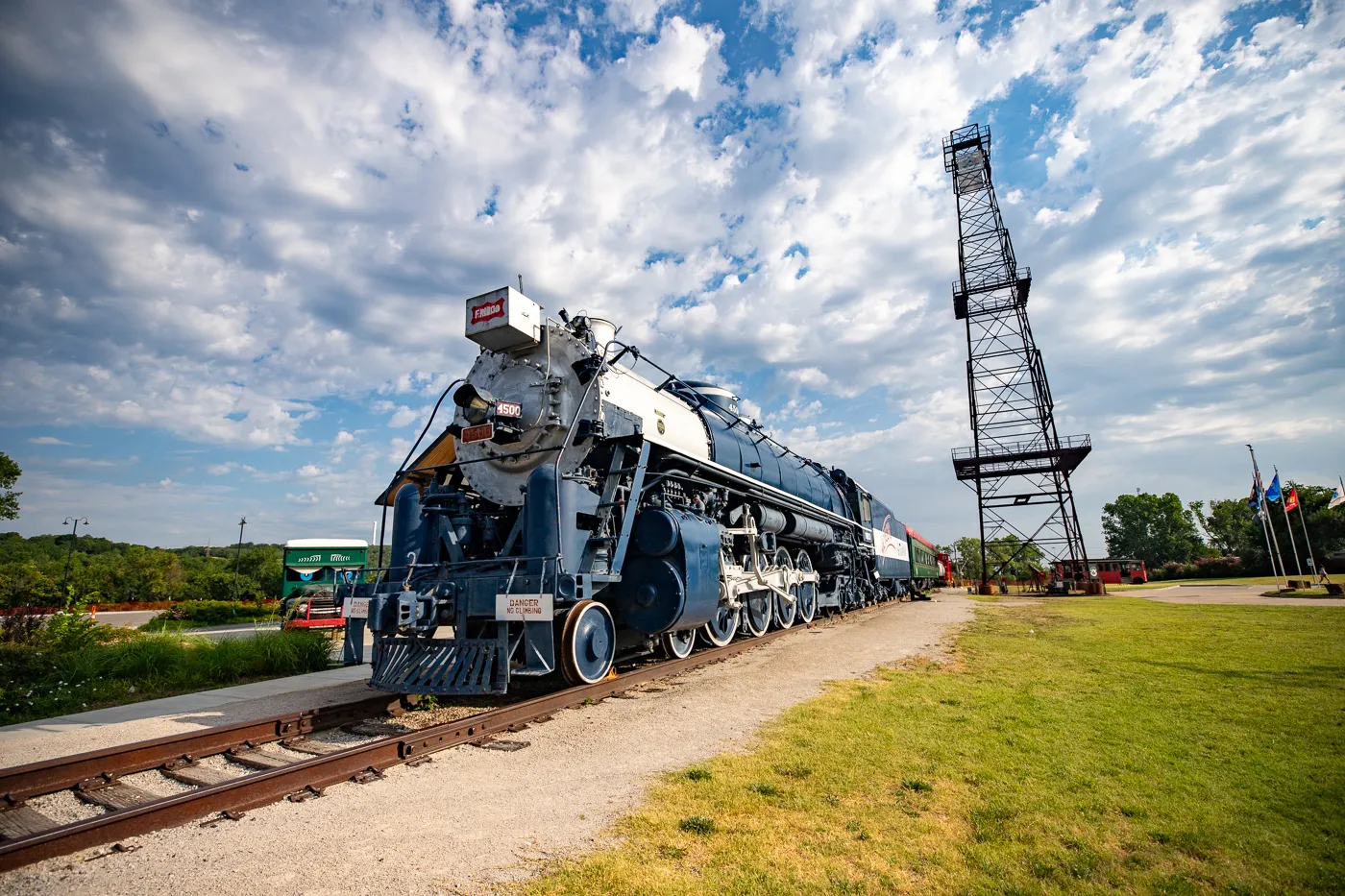
The Train
The train out front is one of the centerpieces of this living museum. The mish-mashed locomotive is made up of several cars from history.
The Frisco 4500 Meteor Steam Engine was built in Philadelphia, Pennsylvania in 1942 by the Baldwin Locomotive Works. It originally pulled the passenger train “METEOR” from St. Louis, Missouri, through Tulsa, and to Oklahoma City and back every day.
The 1929 Tulsa-Sapulpa Union Murray Hill Car was built by the Pullman Car Co. to serve the NYNH&H and the Pennsylvania Railway’s “Federal Express” train.
1917 Double-Domed Oil Tank Car is the kind used in Oklahoma’s 1900s oil boom. The car has been hand-painted with logos of various oil companies related to Tulsa’s history.
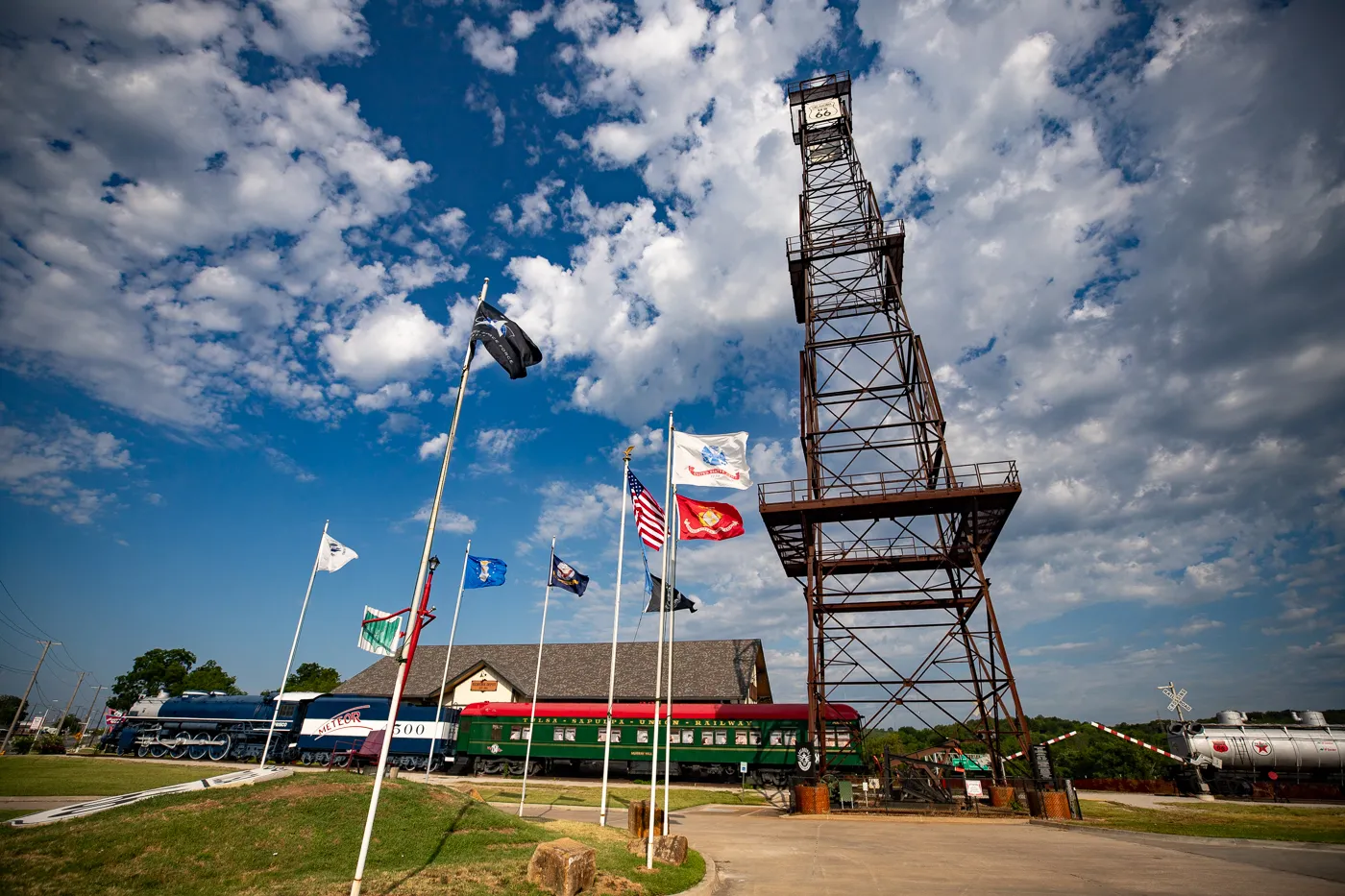
The Centennial Derrick
Towering above the Route 66 Historical Village is the Centennial Derrick, which stands in the spot of the area’s first oil strike on June 25, 1901. The derrick was built by a local steel contractor and funded by the Oklahoma Centennial Commission. It was erected in celebration of Oklahoma’s Centennial in 2007. Rising 154-feet high it is North America’s tallest derrick.
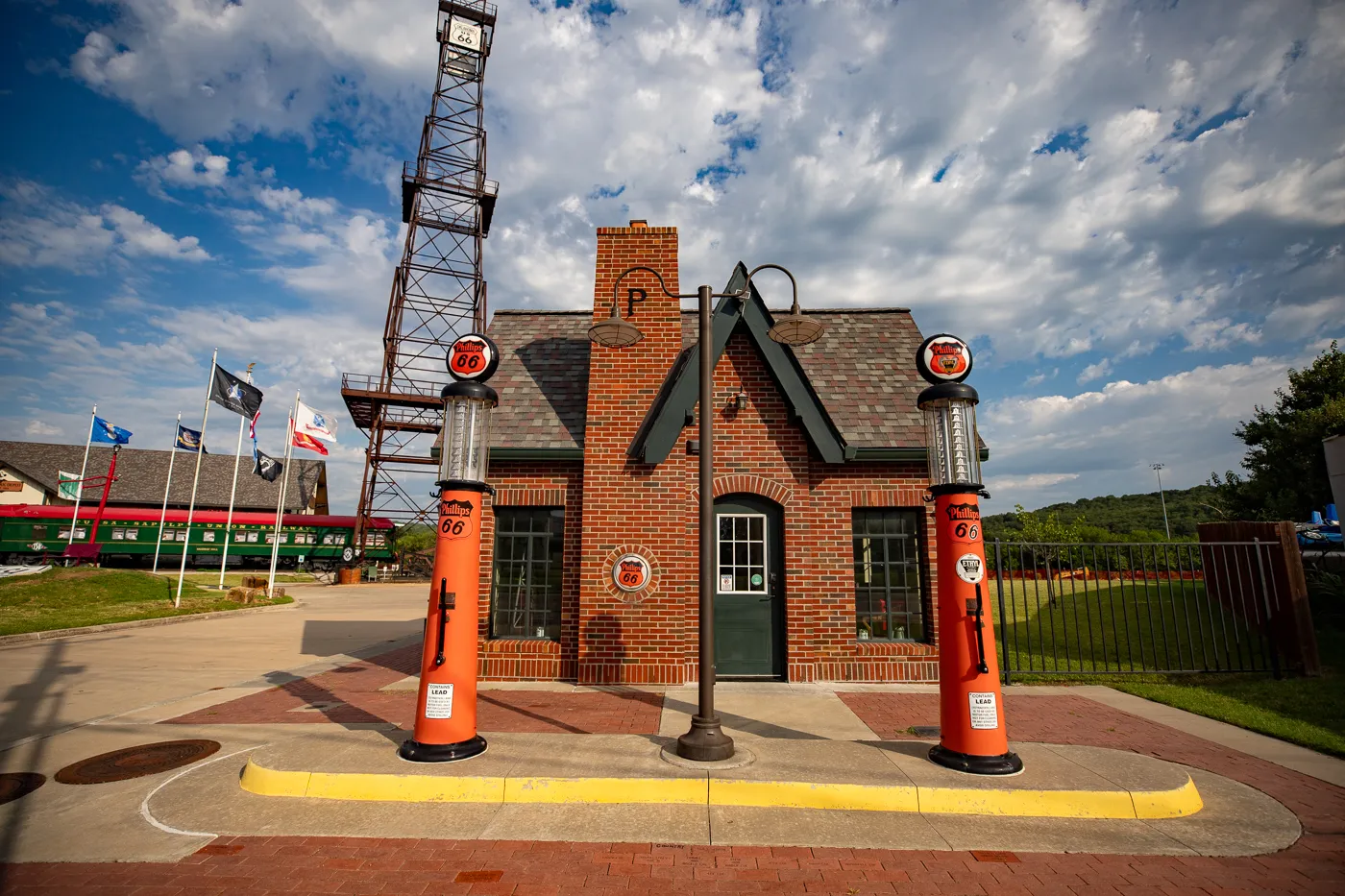
Phillips Cottage Style Gas Station
The Phillips Oil Company service station is a cottage-style building that was popular in the 1920s and 30s. Inside find an information center that is open select hours on weekends.
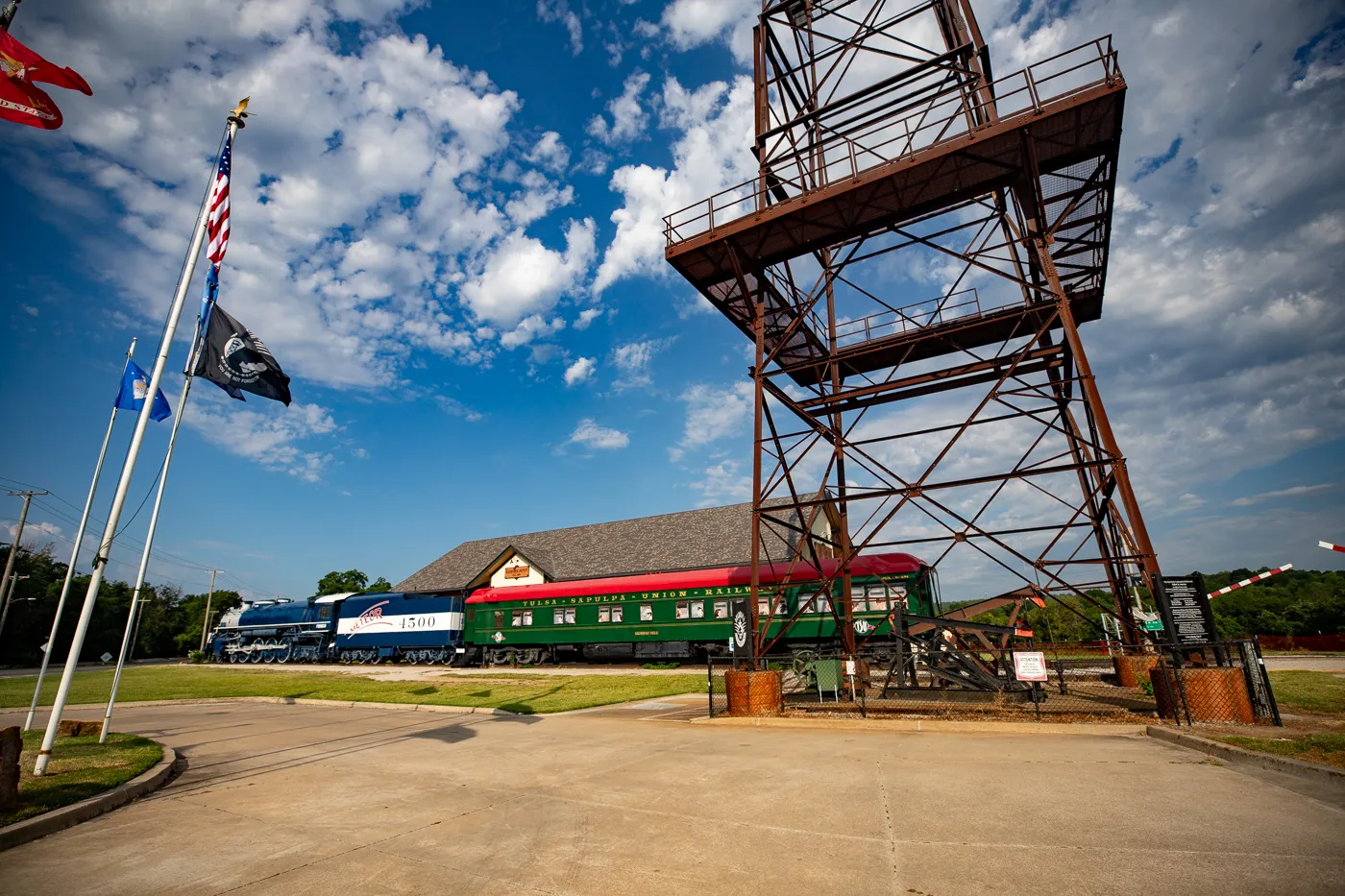
Historic Oil-field Pump Jacks
For a time in history pump jacks, machines that extracted crude oil from the ground, were a familiar site in Tulsa. Under the giant derrick find several vintage pump jacks that date back to the 1880s.
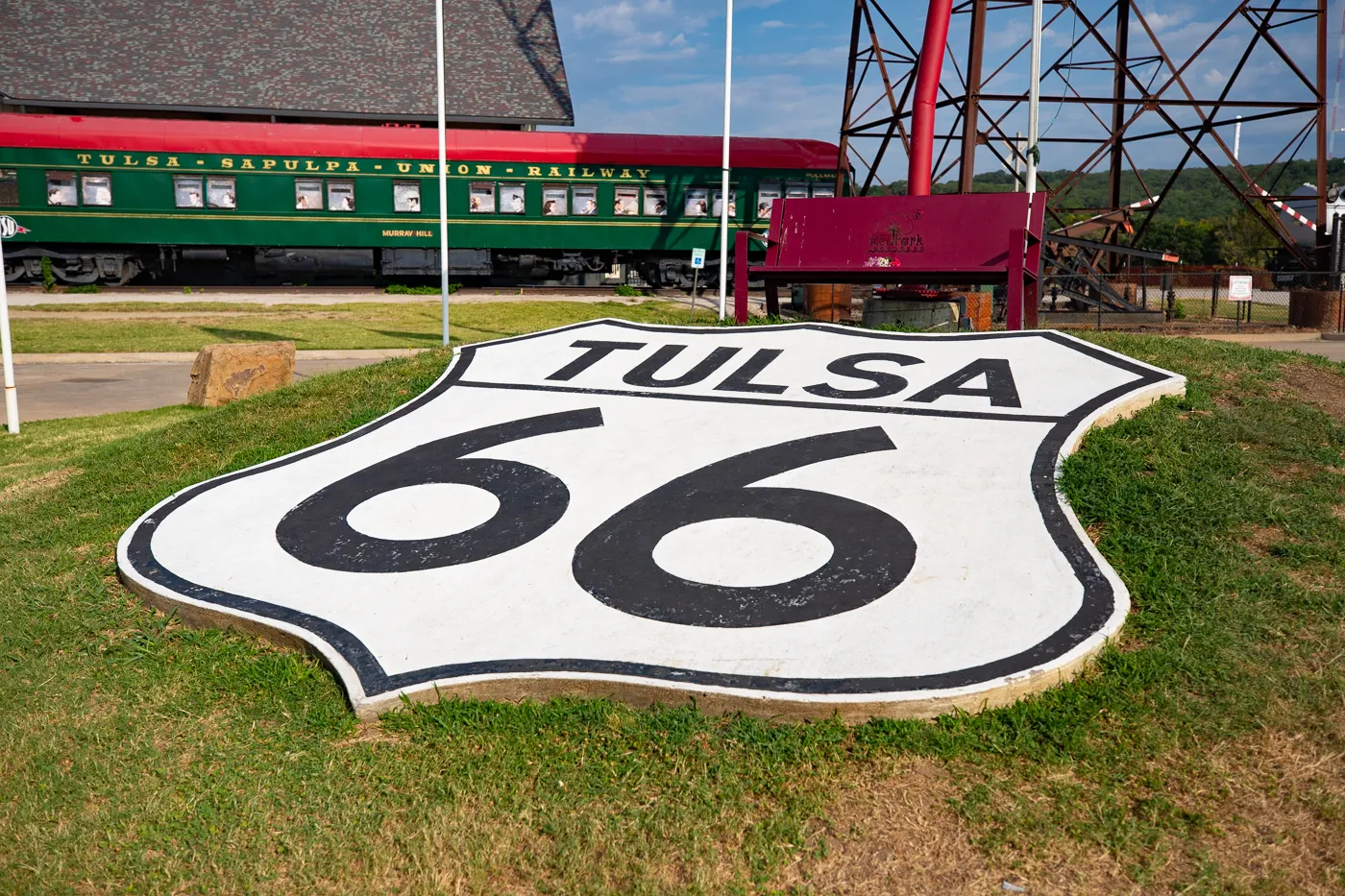
Tulsa 66 Shield
In front of the oil derrick find a giant Route 66 Shield sign marked with “Tulsa 66.” This 12-foot sign makes for a fun photo op when visiting Route 66 Historical Village
